In Alentejo, a region we know so intimately, Portugal unfolds into vast space and silence. It’s a tapestry of four worlds in one:
In the undulating expanses of Alentejo, a region that whispers secrets like an old friend, Portugal reveals itself not in grand gestures, but in vast spaces and silences. This is a land where four distinct realms weave into a single tapestry of experience.
First, there is Évora, the noble heart of Central Alentejo, rising with a majesty that defies expectation. It’s an open-air museum, but one devoid of the yawn-inducing ennui typically associated with such places.
Then, there’s the Alentejo coast, where hidden beaches brazenly defy the Atlantic. The sun here isn’t just bright; it’s an interrogation lamp, casting doubt on the prowess of even the most robust sunscreen.
Venture to Alto Alentejo, and you enter a realm of mountains and medieval villages, each a custodian of tales long relegated to whispers.
In Baixo Alentejo, the story changes. Here, one becomes lost in endless horizons, discovering that in vastness, there is an unexpected intimacy – it’s where the heart finds, and perhaps even defines, itself.
Allocating several days to explore Alentejo is not just advisable, it’s imperative. Time may seem to move at a snail’s pace, but your appetite for Alentejo cuisine? That’s a different story. It races, eager and unbridled, like an Olympic sprinter at the sound of the starting gun.
And the true hero of this epicurean odyssey? The Alentejo Bread. Cradling a crackling crust and a heart imbued with the scent of wood-fired ovens, it demands to be savoured with olive oil. This isn’t just eating; it’s an act close to worship, a communion with the land itself.
- Central Alentejo
- Beaches of the Alentejo Coast
- Visit Alto Alentejo
- Baixo Alentejo – Visit Beja
- Map for Visiting Alentejo
- How Many Days Are Needed to Visit Alentejo?
- Itinerary for the Best of Alentejo
- When to Visit Alentejo?
- Popular Activities and Things to Do in Alentejo
- What to Eat in Alentejo?
- 10 Best Restaurants in Alentejo
- Where to stay in Alentejo?
- Best Accommodation in Évora – Alentejo
- How to Get Around
- Frequently Asked Questions:
Central Alentejo

Central Alentejo unfolds like a minimalist masterpiece, a vast, undulating canvas of plains that we’ve traversed time and again.
Its geography is a study in understatement: serene valleys and hills that laze under the sun, seemingly too languid to assume any drastic slopes.
This rural landscape, with its gentle contours, adds an ineffable charm to the region.
Visit Évora
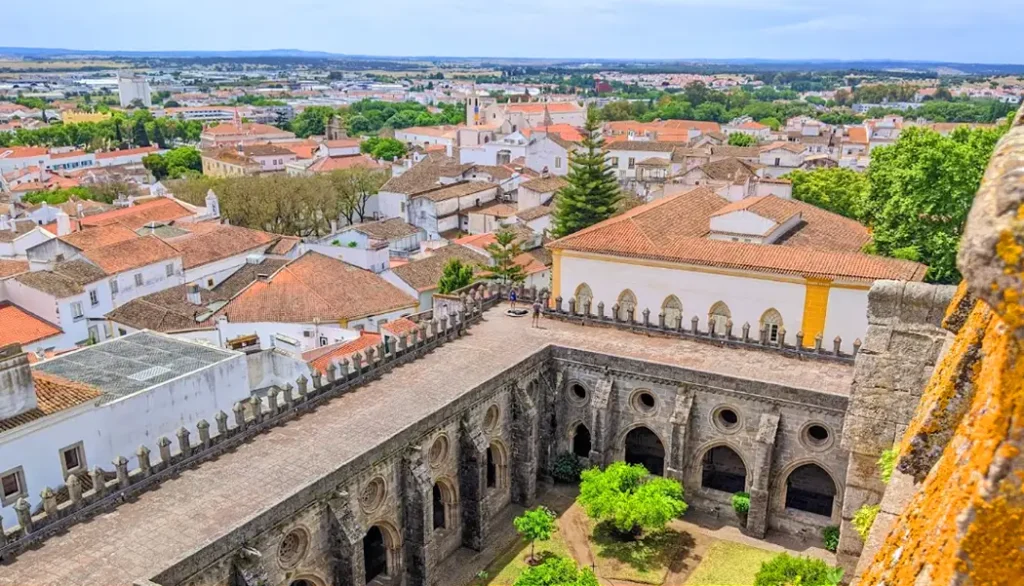
Évora, about 130 km from Lisbon (see Things to do in Lisbon) and a mere 110 km hop from Badajoz, stands proudly as a UNESCO World Heritage Site. Each stone, each corner of this city, is steeped in history, turning Évora into a living chronicle, a base from which the entirety of Alentejo can be explored.
Another stroll through Évora? Absolutely. The city always beckons for yet another exploration, revealing new layers with each visit.
Roman Temple of Évora
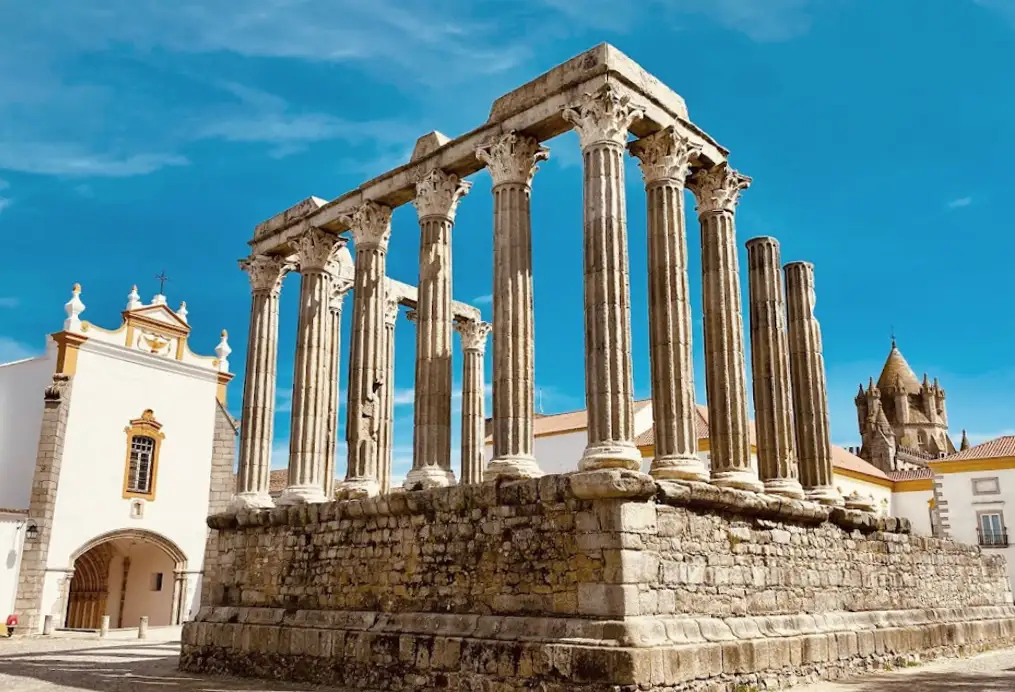
In the heart of Alentejo, the Roman Temple of Évora stands as a solemn testament to the passage of time.
Since the dawn of the Common Era, this temple has witnessed the rise and fall of empires, enduring through centuries, men, and wars.
Positioned in Largo Conde de Vila Flor, adjacent to the Cathedral, it rests like a wise elder on a park bench, a silent guardian of history.
Palácio dos Duques de Cadaval
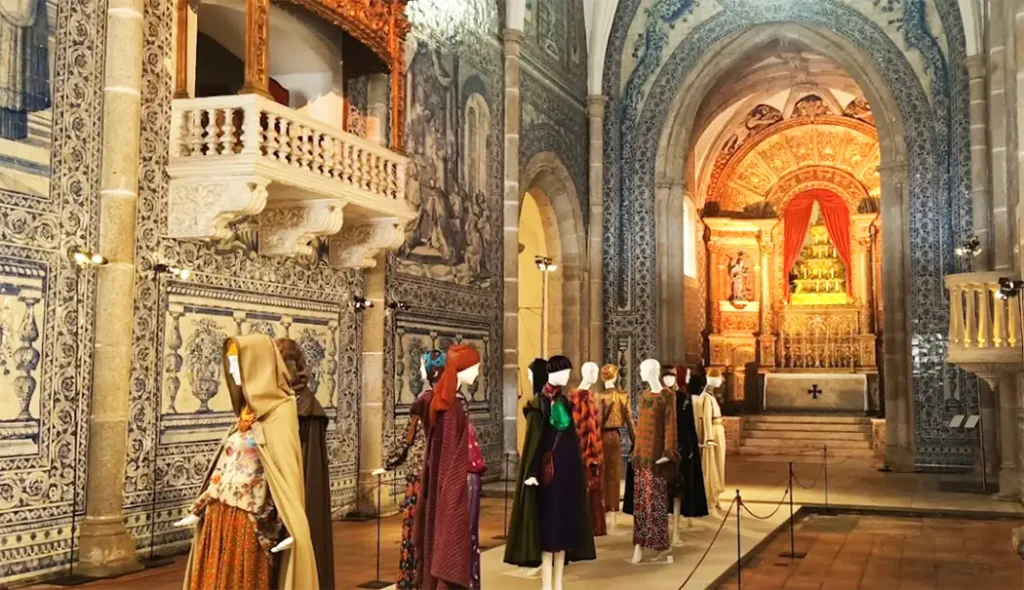
Just a stone’s throw away, the Palácio dos Duques de Cadaval rises, its foundations rooted in 14th-century splendour and Moorish ruins.
This palace holds a special place in our hearts, perhaps because it affords a glimpse into ducal magnificence.
Facing the Roman Temple, the palace is a tapestry of architectural styles: Mudéjar, Gothic, and a dash of Manueline.
Much of the palace is accessible to the public, presenting an eclectic mix of historical and contemporary treasures.
The collection, ranging from books to weapons, paintings to porcelain, creates a dialogue between past and present, captivating and enlightening in equal measure.
Cathedral of Évora

In Évora, the Sé, also known as the Cathedral of Évora or the Basilica of Our Lady of the Assumption, rises with an imposing presence.
Initiated in 1186, this cathedral is not just a structure but a testament to the passage of centuries, each adding its touch to its grandeur.
As the largest medieval cathedral in Portugal, each visit here is akin to turning the pages of an ancient, hallowed tome.
Within its walls, the cathedral encompasses a museum of sacred art, a repository of religious relics and artistry.
Among its treasures are the 13th-century Virgin and the Holy Wood Cross-Reliquary, each piece a silent narrator of history’s devout moments.
Pastelaria Conventual Pão de Rala

Not far from this historic site is the Pastelaria Conventual Pão de Rala, a place where even the walls seem steeped in history, adorned with echoes of past accolades and distinguished visitors.
For us, this is no mere bakery; it’s a portal to a bygone era.
Here, one can indulge in the Pão de Rala, a confection born from a 16th-century royal visit by King Dom Sebastião.
The array of sweets – queijinho do céu, encharcadas, barrigas de freira, morgados, and the cheese and almond pastries – is a veritable feast for the senses.
Merely gazing upon them is enough to feel the scales tipping! It’s an irresistible invitation to immerse oneself in the flavours of yesteryear, a delicious journey through taste and time.
Chapel of Bones – Igreja de São Francisco

In the 17th century, within the Church of São Francisco, three Franciscan monks undertook a macabre yet thought-provoking project: the creation of the Chapel of Bones.
This place, where death converses with the living, is as unsettling as it is mesmerizing.
The inscription, “We, bones lying here bare, await yours to join us,” serves as a chilling memento mori, a nudge, perhaps, towards contemplating our mortality – and maybe opting for more salads.
Encased within the chapel’s pillars and walls are the bones and skulls of approximately 5,000 souls, each cemented together in a silent testimony to life’s transience.
Água de Prata Aqueduct
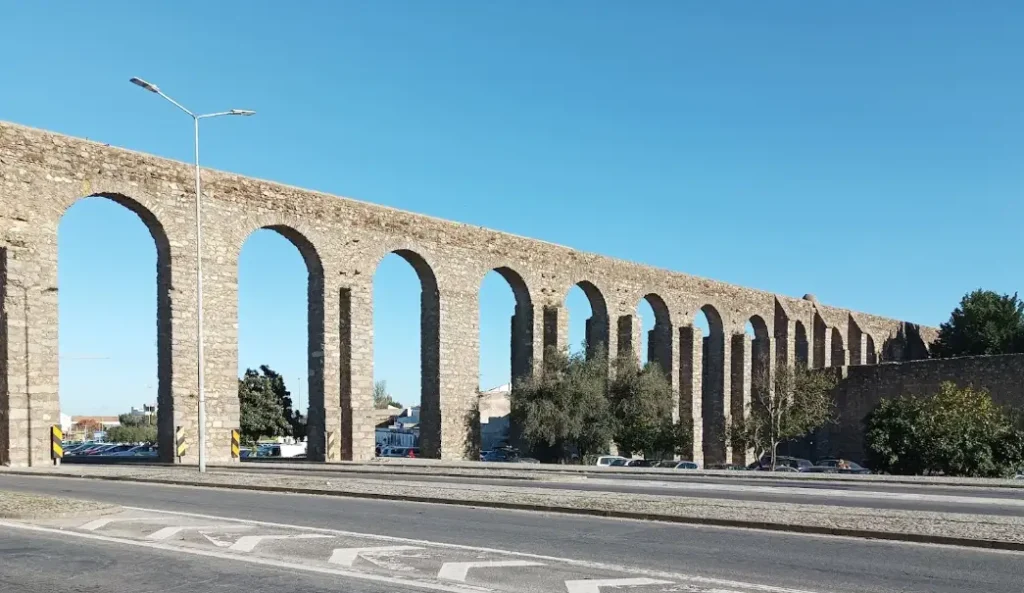
Then, there’s the Aqueduct of Silver Water, a monumental testament to human ingenuity and a structure that never ceases to amaze us.
Declared a National Monument in 1910 and inaugurated in 1537, this aqueduct, built upon the foundations of an ancient Roman predecessor, stands as a symbol of continuity and innovation.
Cycling beneath its Renaissance arches for 8.3 kilometres is to traverse a unique path that threads through both distance and history.
Walls of Évora
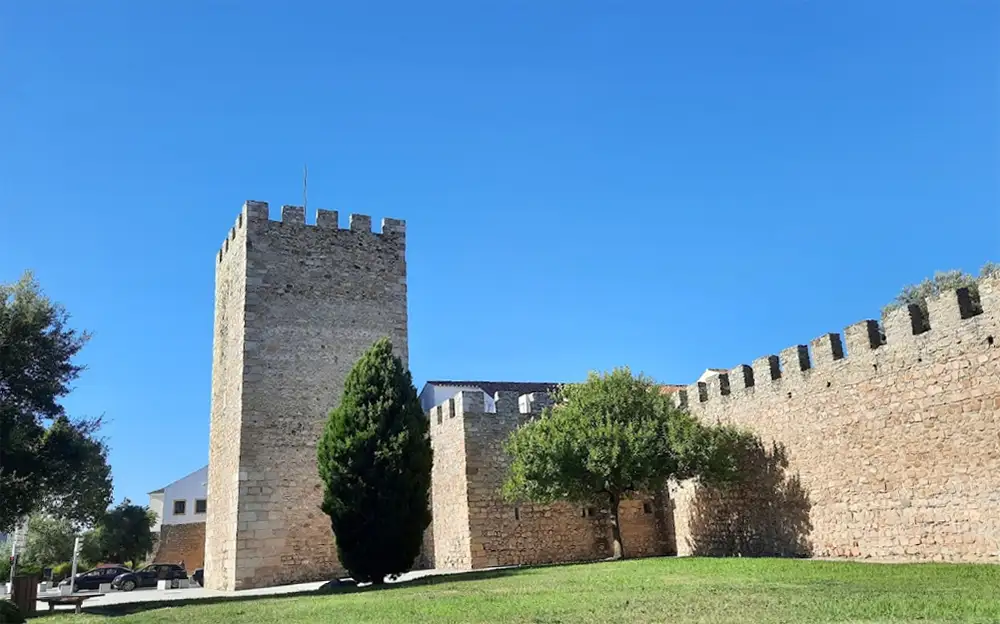
The Walls of Évora, which have often captivated us during our walks, are the city’s enduring guardians.
Comprising two defensive lines, the old fence (Roman-medieval) and the modern, they narrate the tale of Évora’s resilience.
These walls, standing through centuries, are not just fortifications; they are silent witnesses to the city’s evolving saga.
Almendres Cromlech
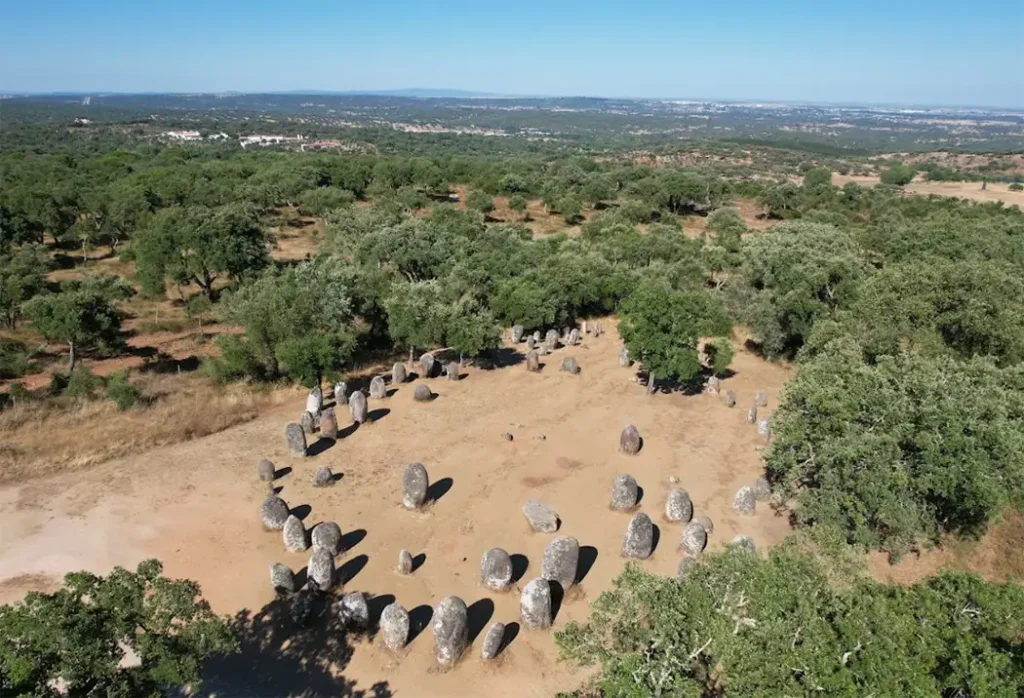
Just outside Évora, within the Almendres Estate, lies a prehistoric wonder that predates even Stonehenge: the Almendres Cromlech.
This megalithic marvel, with its two distinct enclosures, dates back to between the end of the 6th and the 3rd millennium BC.
To walk among these ancient menhirs is to step back into a time of druids and a profound communion with nature. Across Alentejo, similar megalithic monuments stand, each a silent sentinel of a long-forgotten epoch.
Visit Vila Viçosa
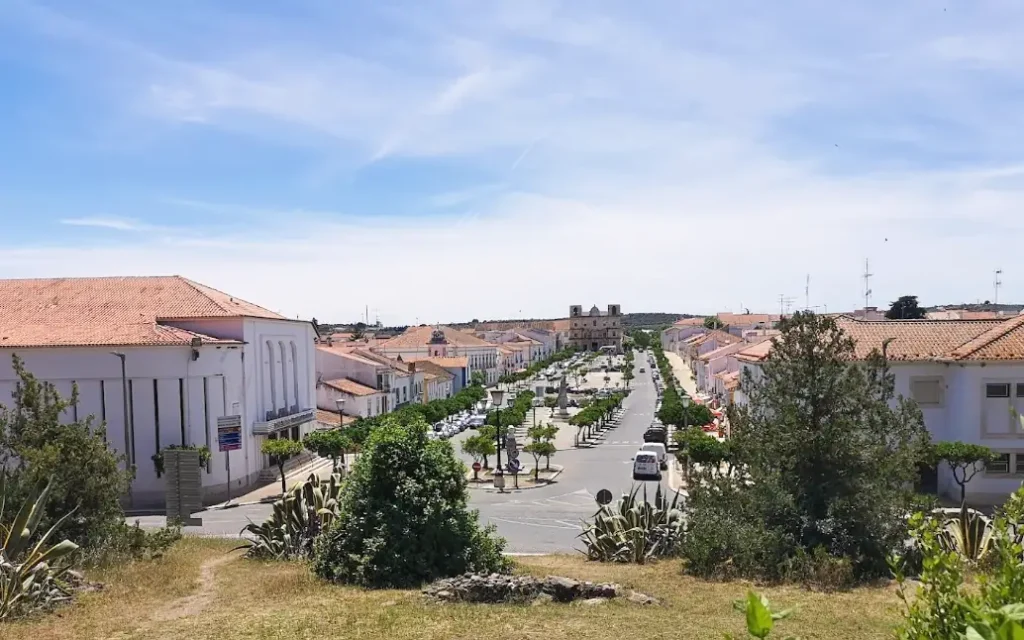
Vila Viçosa, affectionately dubbed the ‘lady of Alentejo,’ captured our hearts with its whitewashed houses and quaint cobbled streets.
It emerged as a place of prominence in the 18th century, becoming a favoured summer retreat for Portuguese royalty.
Ducal Palace
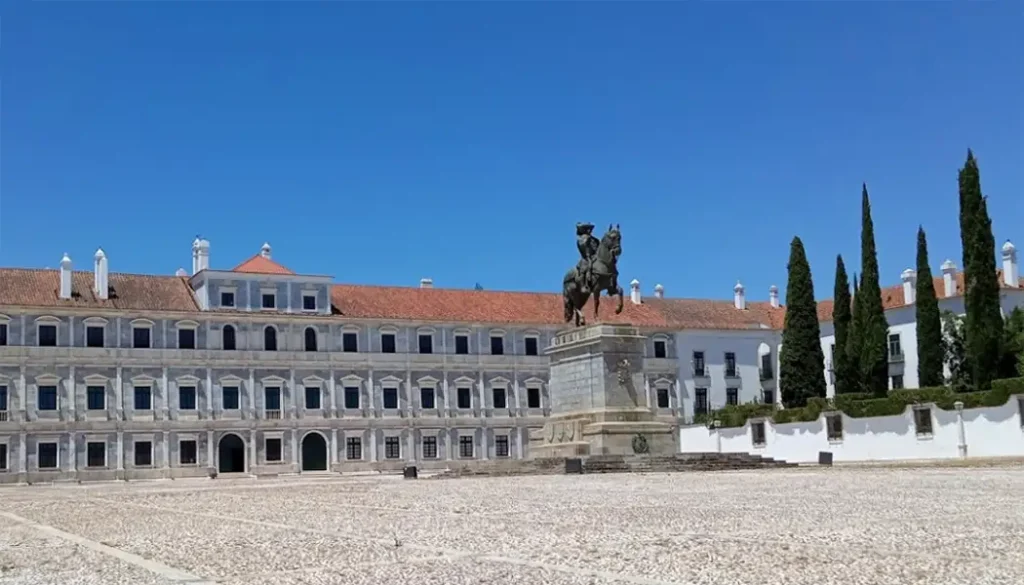
The Ducal Palace of Vila Viçosa, commissioned in the 16th century by D. Jaime, the 4th Duke of Bragança, presents a Renaissance façade reminiscent of the Ribeira Palace in Lisbon.
This opulent former summer residence of the royal family is a showcase of extravagance, adorned with marble, exquisite tapestries, and luxurious furniture.
The value of each piece within its walls is so immense that one almost feels a sense of caution for merely existing in their presence.
A visit to Vila Viçosa would be incomplete without exploring the Castle, the Sanctuary of Our Lady of Conception, and the Church of São Bartolomeu.
Each of these historic sites contributes to the rich tapestry of history and culture that Vila Viçosa so elegantly weaves.
Visit Estremoz

Estremoz, with its vibrant Saturday markets, has always held a special place in our hearts.
As one of Alentejo’s famed “marble cities,” its glistening marble constructions, sourced from nearby quarries, lend the city an almost ethereal glow.
And for connoisseurs of Portuguese tilework like us, the Berardo Estremoz Museum is an unmissable treasure.
In a mere three hours, one can soak in the essence of this place, leaving with a wistful longing for more.
Pousada da Santa Rainha Isabel

The Pousada da Santa Rainha Isabel, set within a castle that once belonged to Queen Santa Isabel, provided us with an unforgettable stay.
The rooms, draped in 18th-century decor, offer more than mere rest; from our room’s window, the vast Alentejo landscape unfurled like an intricate tapestry beneath the sky.
Castle of Évora Monte

Our visit to the Castle of Évora Monte, on a sun-drenched afternoon, remains etched in memory.
The castle, with its four imposing circular towers, stands majestically atop the Serra d’Ossa.
Its roots trace back to the era of the Reconquista and Geraldo Sem Pavor, a pivotal figure in the conquest of Évora and its environs from the Moors.
In 1834, the castle bore witness to a pivotal moment in history – the signing of the Evoramonte Convention, which marked the end of the Portuguese Civil War.
The weight of history is tangible within its walls, a place where the past is not just remembered, but vividly alive.
Visit Arraiolos
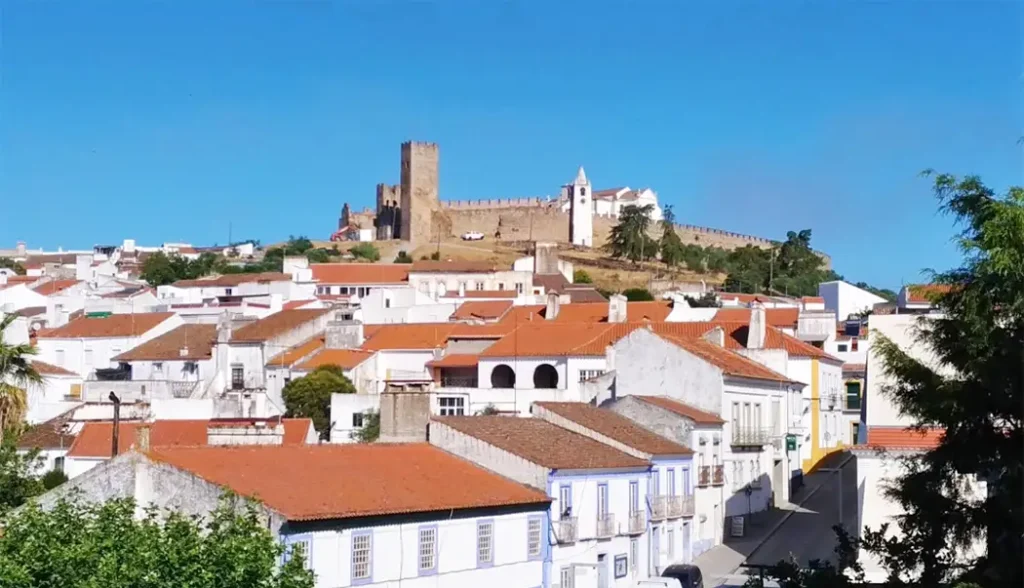
Arraiolos, a name synonymous with its famed Arraiolos Rugs, revealed to us far more than its tapestry heritage during our visit.
This village, with its deep roots stretching back to the 13th century, was once the residence of King D. Dinis, who bequeathed to it the legacy of a unique circular castle.
Arraiolos Castle
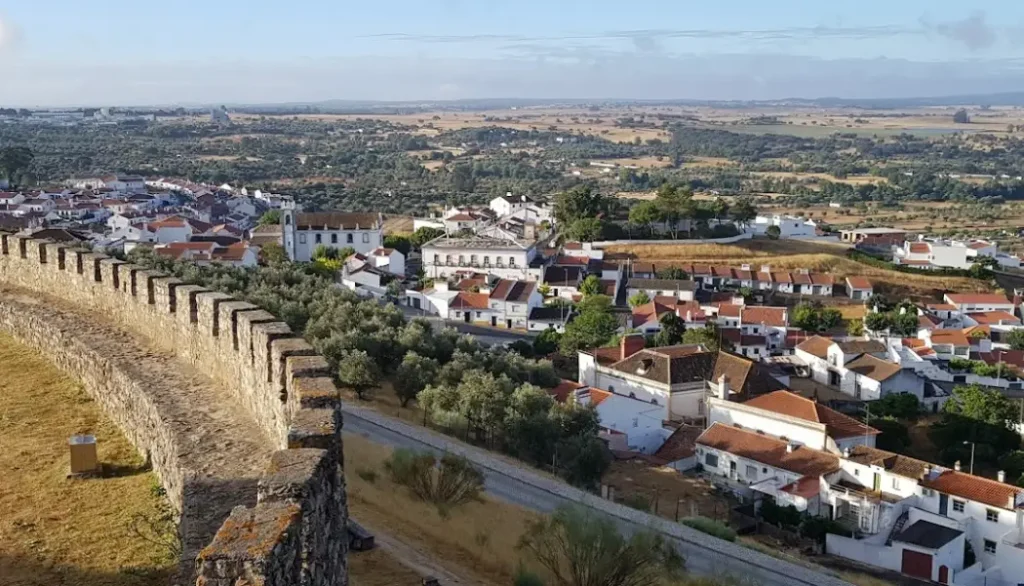
The Arraiolos Castle, a rare example of a circular Gothic fortress, has a history as intriguing as its architecture.
It once served as a stage for military campaigns against Castile, but sadly saw its grandeur diminish in the 17th century, falling prey to plunder due to its inadequate defences.
The devastating earthquake of 1755 further marred its structure. Today, it faces a gentler invasion, one of tourists armed with cameras, capturing its timeless ruins.
Arraiolos Carpet Interpretative Center

Our exploration in Arraiolos also led us to the Arraiolos Carpet Interpretative Center, where we delved into the intricate history of these carpets, dating back to the 17th century.
Inspired by the Islamic and Ottoman empires, these carpets initially featured bold colours, a stark contrast to the intentional imperfection of Eastern carpets.
Over time, by the 20th century, they evolved to adopt softer hues.
The centre provides a fascinating journey through the rich tapestry of history and art that these carpets represent.
Visit Montemor-O-Novo
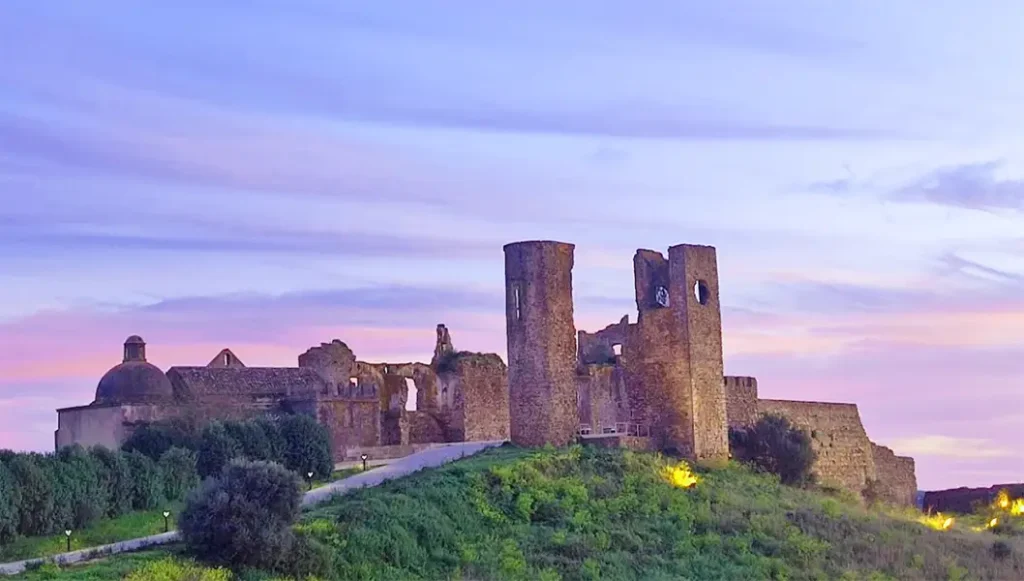
The Castle of Montemor-o-Novo, rising from the remnants of a Muslim fortification, is more than just an ancient structure; it’s a portal to Portugal’s storied past.
As we stood within its walls, it was profoundly moving to ponder that it was here, during the Cortes of 1496, that Vasco da Gama charted plans for his epochal sea voyage to India.
These decisions, made within these very walls, redefined not just borders but destinies.
Monte Selvagem Reserva Park

Further north, near Lavre in Montemor-o-Novo, Monte Selvagem Reserva Park offered us a day of sheer delight and adventure.
Home to 400 animals from 75 species across 20 hectares, the park’s giant swings and trampolines added a joyous dimension to our visit.
The experience, enriching and affordable at less than 15 euros, left us with a longing to return.
Visit Monsaraz

Monsaraz, a vision in white, gradually reveals itself as you ascend its hill. Entering through its ancient gates is like stepping into a different era, an experience that lingers in memory.
The village, with its cobblestone streets and alleys, retains an unmistakably medieval aura.
From the tower of the castle, one is treated to breathtaking views over Alqueva, Europe’s largest artificial lake.
Monsaraz is a photographer’s dream, a place where every angle and every shot turns into a postcard-perfect image.
Beaches of the Alentejo Coast
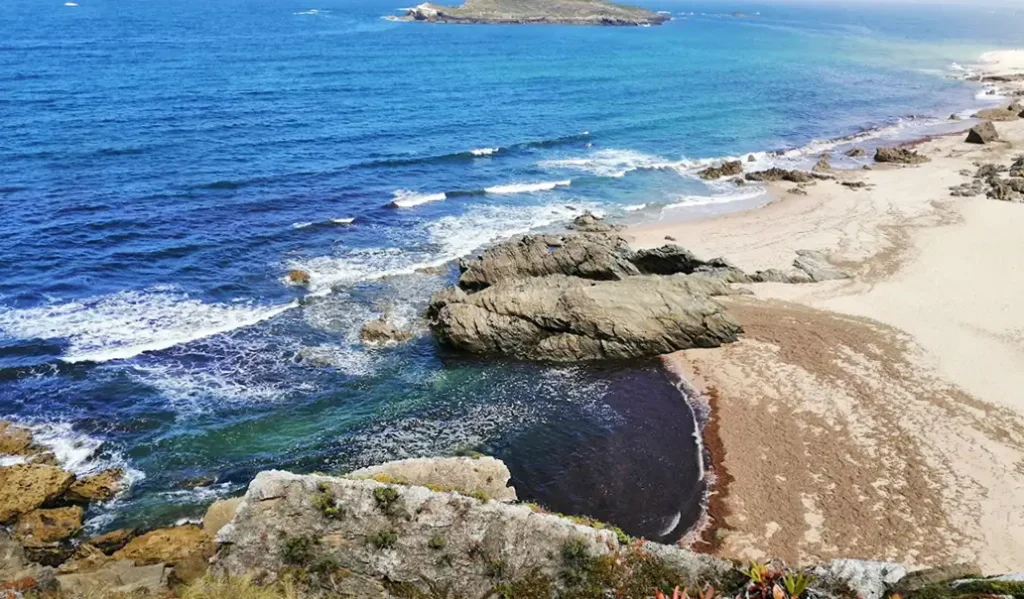
When considering a swim in Portugal, most minds drift towards the Algarve, renowned for its stunning beaches that have been luring visitors for decades.
And rightly so, for its beauty is undeniable.
However, in our quest for the quintessential summer retreat, we found that the beaches of the Alentejo Coast unveil themselves magnificently, minus the throngs of tourists.
These sunbathing spots, often more accessible than their Algarvian counterparts, are akin to those hidden gem restaurants — lesser-known yet offering an experience so delightful that one can’t help but wonder, “Why isn’t this place thronged with visitors?”
Visit Troia – Grândola Beaches
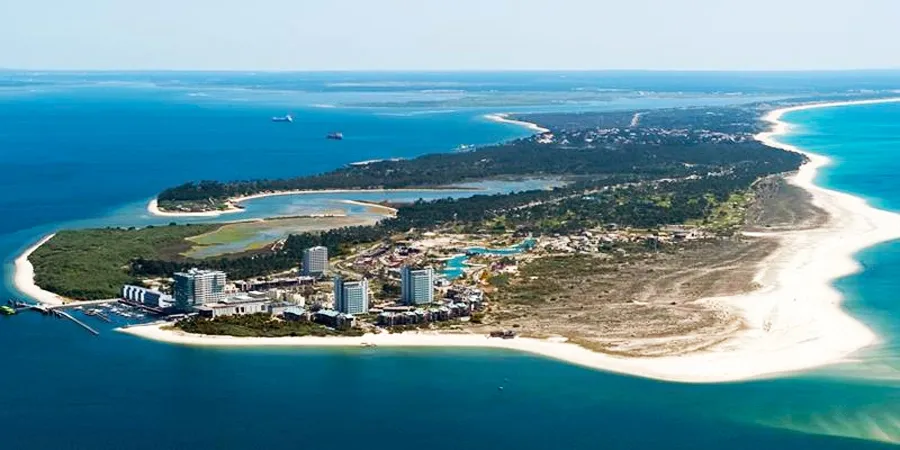
On the Troia Peninsula, where the Sado River tenderly merges with the Atlantic, stretches a coastline that seems endless, bordered by the serene Serra da Arrábida.
Troia-Mar, with its inviting white sands, is perfect for leisurely strolls. Further south, Troia-Galé Beach promises tranquillity and scenic beauty.
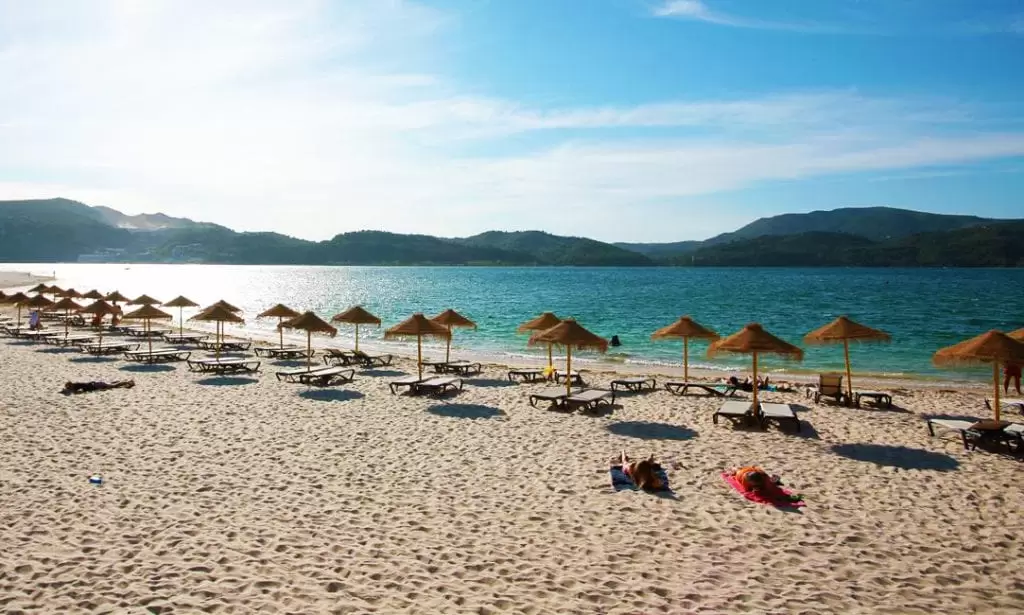
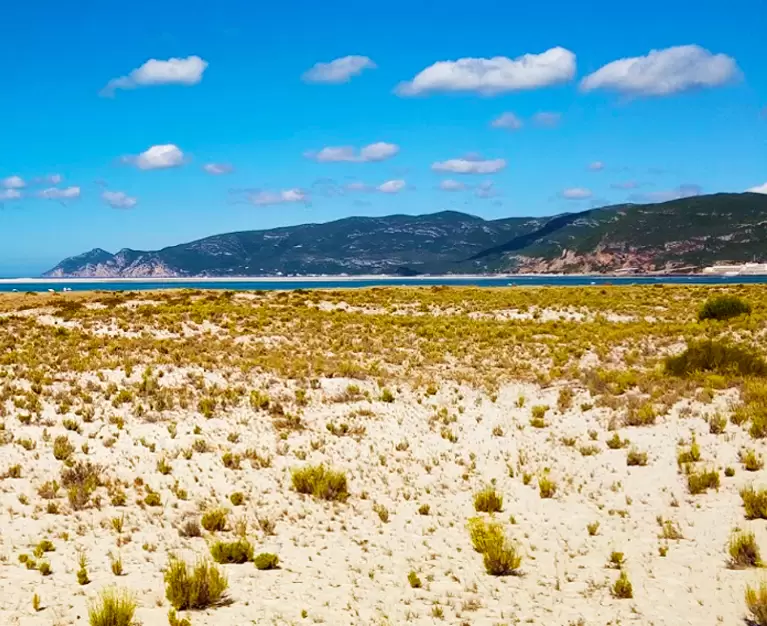
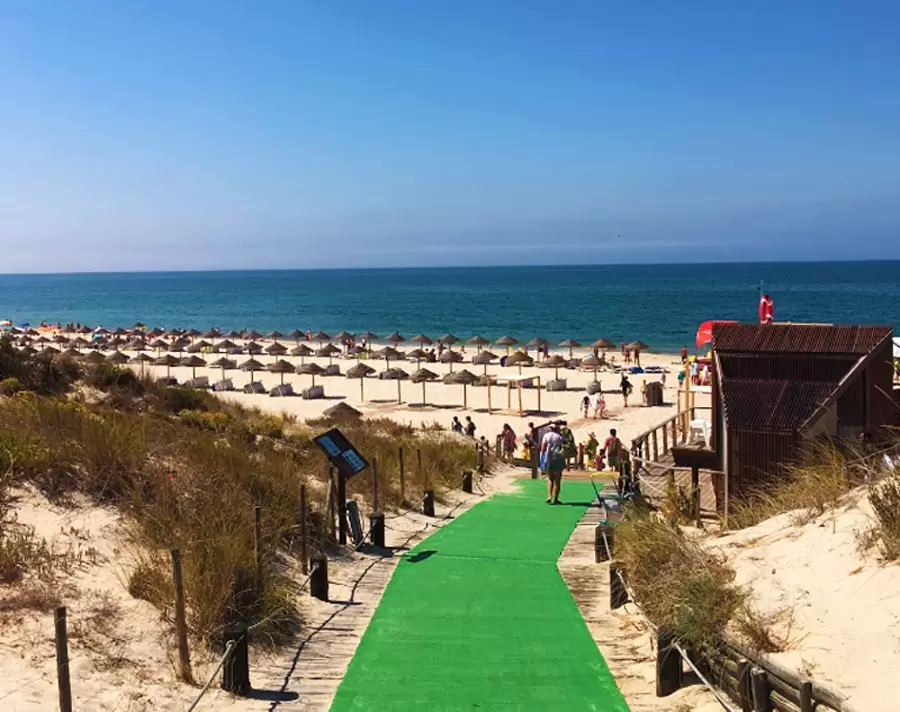
For those, like us, seeking solace away from the crowds, Troia-Atlântica Beach near Soltroia is a hidden summer sanctuary, equipped with parking and all necessary amenities.
Praia da Comporta

Then there’s Praia da Comporta, discovered as we ventured down the dusty roads of the Troia Peninsula, reminiscent of a scene from a budget road trip film.
At first sight, it was a revelation.
Greeted by its Blue Flag status, vigilant lifeguards, well-structured facilities, and orderly, paid parking, Comporta Beach stands as a pristine paradise, meticulously maintained for all who visit.
Praia de Melides

On our way to Melides Beach, we meandered through a road bordered by enchanting pine forests and rice paddies, a setting that naturally lends itself to introspection, or at the very least, pondering over dinner options.
Arriving at this serene beach, where the sea gracefully converges with the lagoon, was like stepping into a tranquil world.
Melides Beach, with its convenient access and ample parking, offers more than just a rejuvenating dip in the sea. It’s a place where one can engage in a spirited game of volleyball or simply bask in the sun’s embrace.
The nearby white houses of Melides village often provoke a whimsical thought: “Should I consider buying a house here?”
Praia do Pego
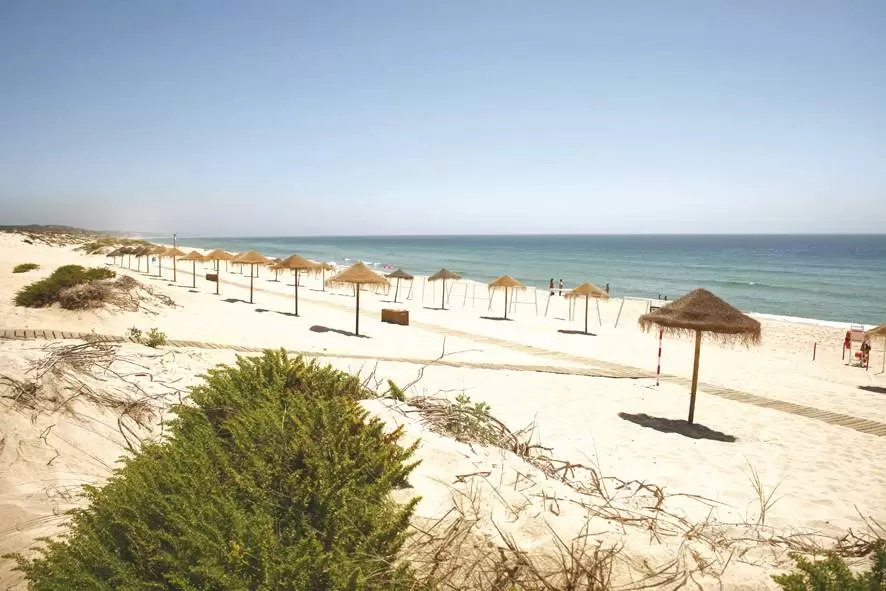
Pego Beach is a sanctuary of calm, where the gentle sea and pristine white dunes facilitate moments of absolute tranquility.
The peacefulness is so profound that the mere sound of crunching chips can feel like an intrusion.
Here, time appears to pause, allowing us to fully embrace the serenity of the waves and the expansive sandy beach.
Visit Santiago do Cacém
A short-distance away lies Santiago do Cacém, nestled close to Alcácer do Sal.
The town unfurls beneath the protective gaze of its castle, a structure we had the pleasure of exploring.
The nearby Roman ruins of Miróbriga, whispering tales of a distant past, offer a captivating glimpse into history.
Praia da Costa de Santo André
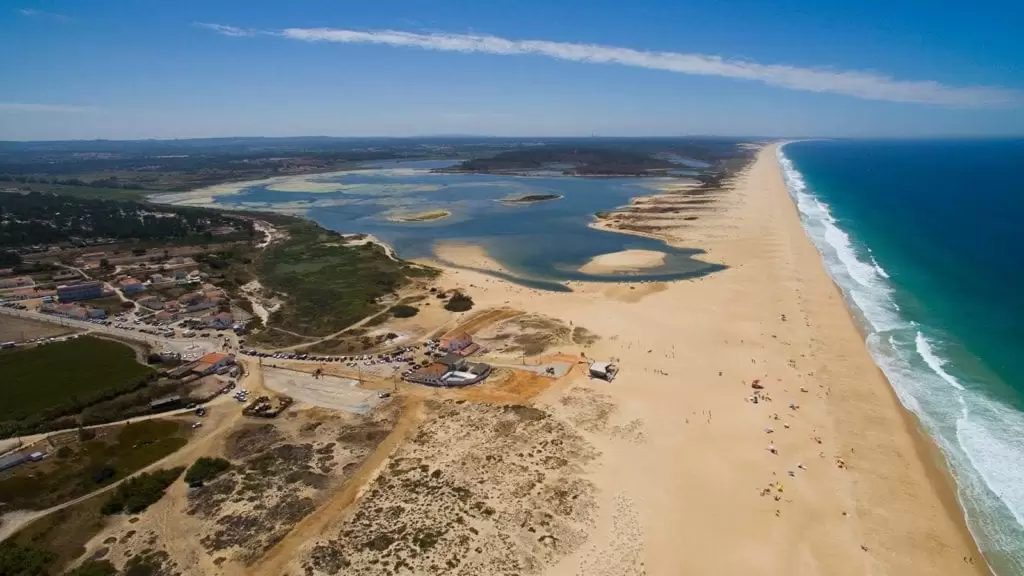
Costa de Santo André Beach, with its unique access to the lagoon, epitomizes the rare beauty of the Alentejo coast.
Equipped with amenities like bathrooms and showers, it presents an ideal spot for relaxation.
The addition of a nearby restaurant-bar serves to enrich the experience, making it a perfect seaside retreat.
Badoka Safari Park
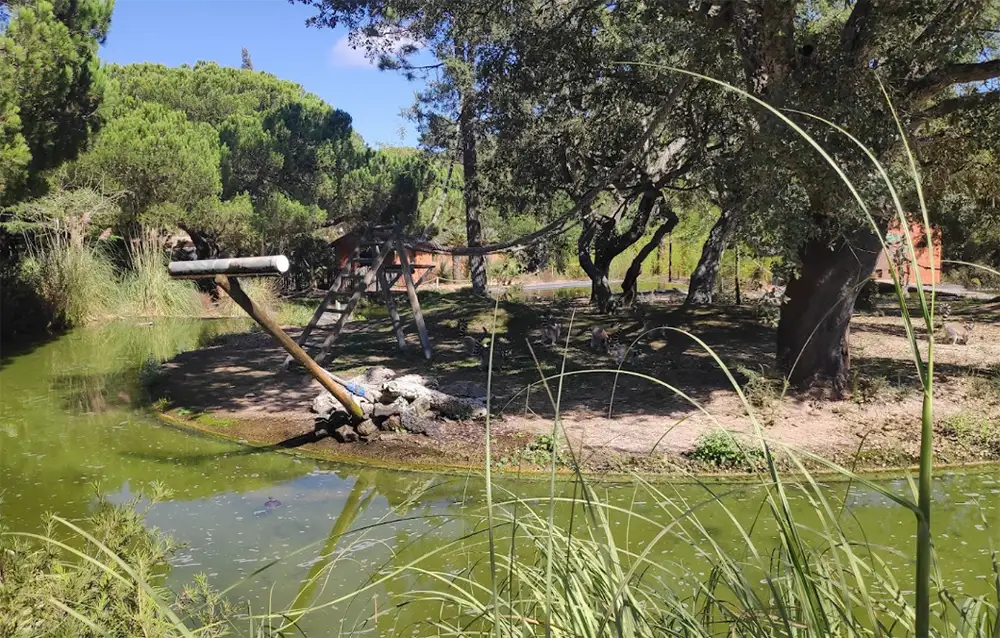
Down the N261, we stumbled upon an unexpected sanctuary: the Badoka Safari Park.
In this little corner of Portugal, African wildlife, including the majestic giraffes, roamed with a semblance of freedom that blurred the conventional lines of captivity and wilderness.
The park, while not boasting an extensive array of biodiversity, unfolded a narrative far richer — one that prompted deeper reflections on our intricate relationship with nature.
In the vicinity, the 18th-century Ermida da Nossa Senhora da Graça, with its accompanying pilgrim’s house decked in Rococo style, stood as a testament to the intertwined narrative of faith and art.
Beaches of Sines – Visit Sines
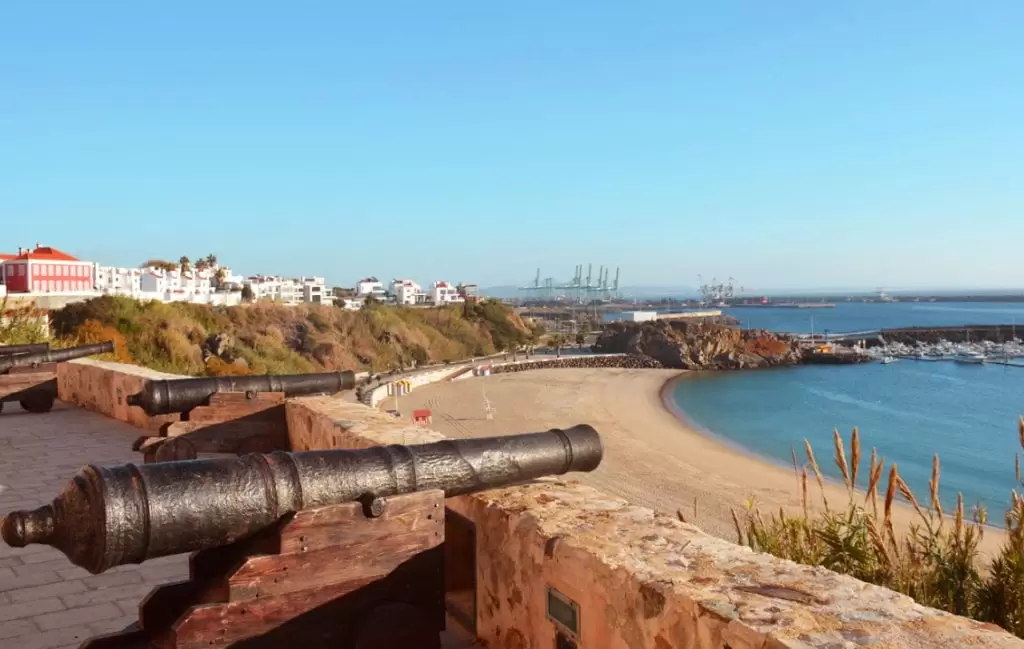
Moving to Sines, we found where history and nature intersect in a poignant dance.
The salty air of this town, lying 160 km south of Lisbon on a cape cleaving the Alentejo coast, seemed imbued with stories — from its charming historic centre to the strategic deep-water port.
Sines offered a portal to a less traversed world, a blend of the past and the pristine.
Praia Vasco da Gama
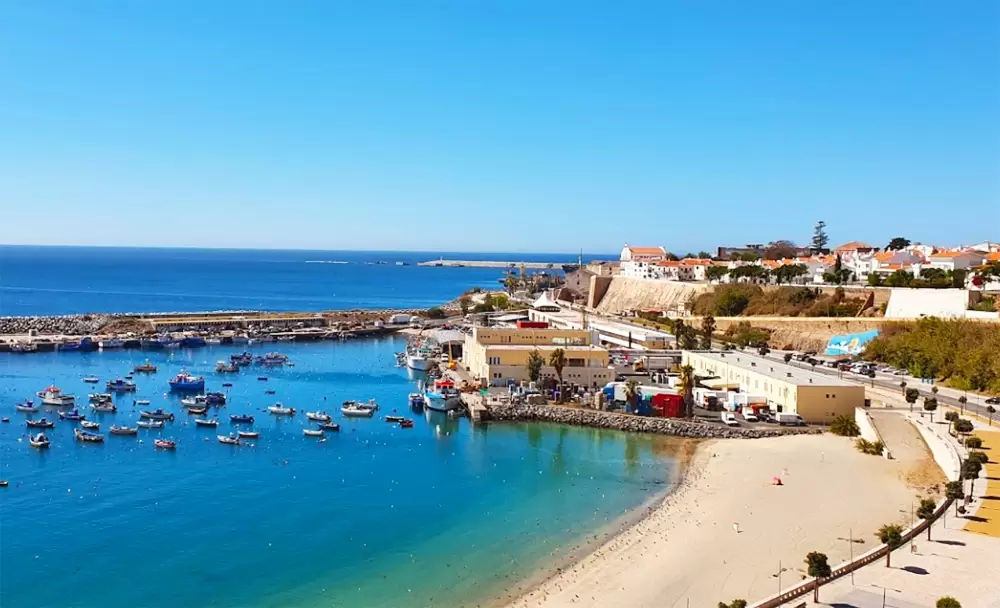
At the heart of Sines’ bay, we discovered Vasco da Gama Beach. Despite its easy access and vigilant lifeguards, this beach maintained an aura of being yet to be fully discovered.
In July, during the Tasquinhas Sines, the beach underwent a transformation, morphing into a vibrant fusion of culinary exploration and local festivities.
It was a celebration of culture and cuisine set against the majestic backdrop of the Atlantic.
Praia de São Torpes
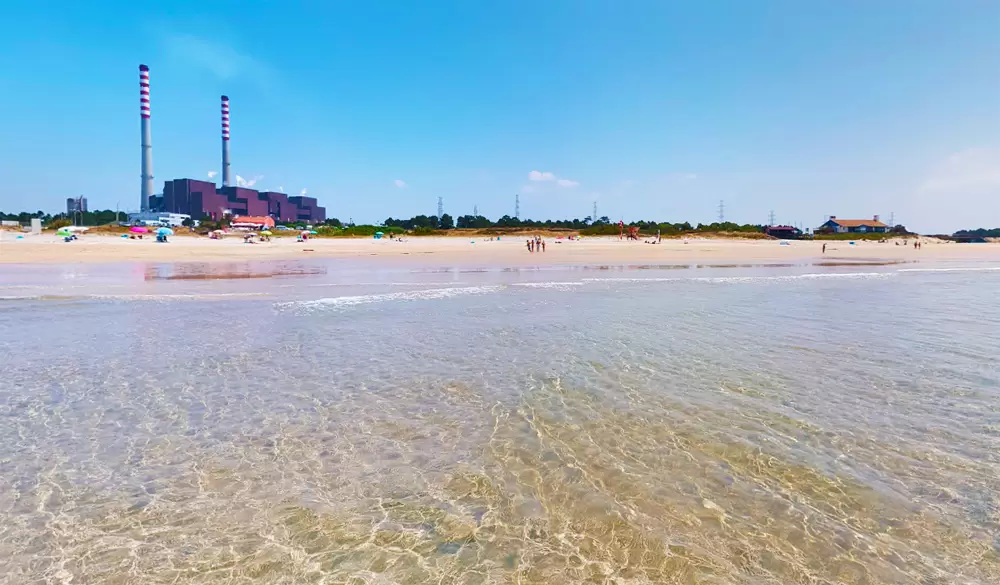
Just a ten-minute drive from Sines, São Torpes Beach presented a striking amalgamation of nature’s beauty and human ingenuity.
Here, the waters, unusually warmed by the nearby thermoelectric plant, offered an almost surreal coastal experience.
The expansive beach, with interspersed rocks and easy access, beckoned those searching for a unique seaside adventure.
The rhythmic waves of São Torpes attracted water sports enthusiasts, bearing silent witness to the beach’s distinct charm.
In its embrace, the Kalux Beach Bar & Surf stood as a symbol of the local community’s engagement with the ocean’s lure and challenge.
Praia da Samoqueira
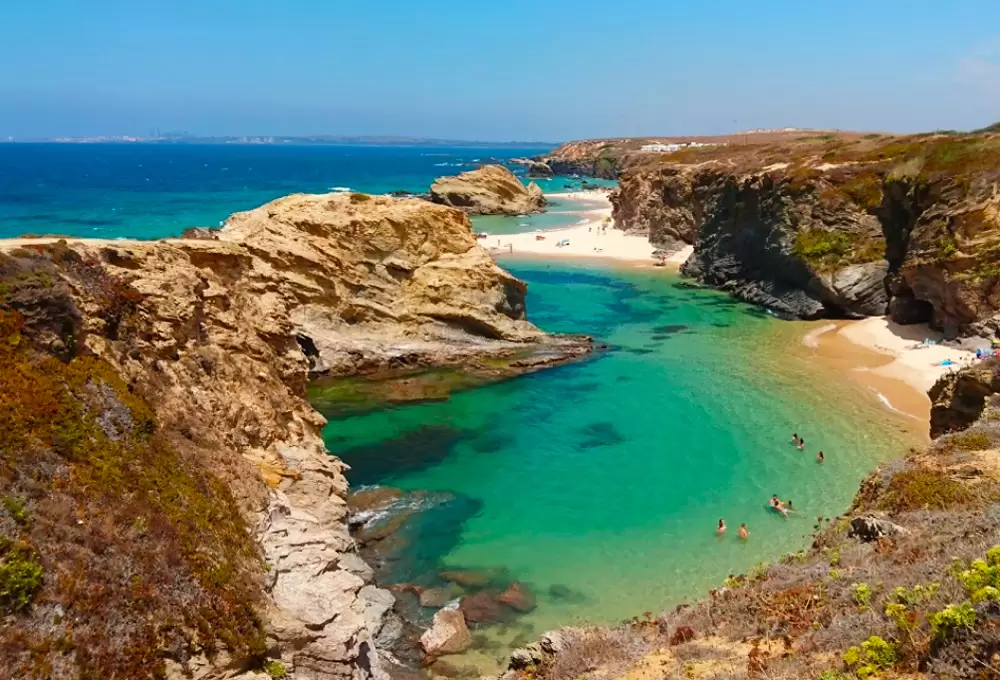
A mere five-minute jaunt south on the M1109, departing from the industrial hum of civilization, lies Samoqueira Beach.
This secluded strip of sand, nestled between commanding rocks, presents a striking contrast to its more frequented neighbours.
The lack of lifeguards underscores its pristine nature and marks it as one of the most authentically picturesque spots along the Porto Covo coast.
It’s a hidden gem, a slice of unspoiled nature that beckons to those seeking solace away from the crowd.
Praia Grande de Porto Covo – Visit Porto Covo

In the heart of Porto Covo, a village where the 18th century still whispers through its architecture and cobblestone streets, we found Praia Grande.
Here, modern accessibility blends seamlessly with the historical tapestry of the locale.
The beach, equipped with robust facilities and vigilant lifeguards in the summer, offers a harmonious balance between safety and the untamed charm of the Atlantic.
With its fine sands and vibrant waves, Praia Grande not only calls to surfers and sunbathers but firmly establishes itself as a cornerstone of the Porto Covo coastal experience.
Praia dos Buizinhos
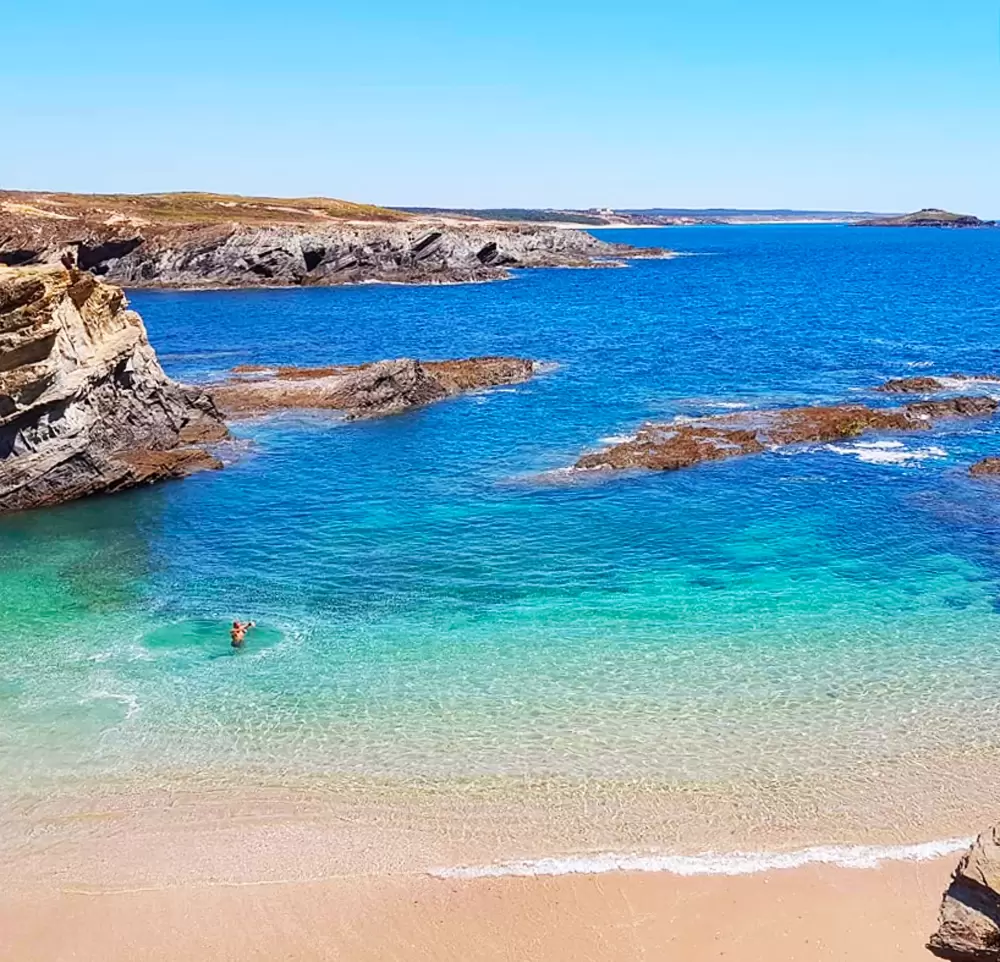
Then there’s Praia dos Buizinhos, a quaint little beach tucked on the southern side of Porto Covo, bearing a name that sounds like it’s straight out of a children’s tale.
At high tide, it nearly disappears, lending it an ephemeral allure that captures the imagination.
This beach, with its fleeting presence, serves as a poignant reminder of life’s transient yet beautiful moments, a metaphor for the ephemeral nature of our experiences.
Praia da Ilha dos Pessegueiros

Traveling southward towards Praia da Ilha do Pessegueiro, we were greeted by an extraordinary vista, with the island itself lingering tantalizingly on the horizon.
In the summer, this beach, equipped with amenities such as restrooms, a restaurant, and parking offers a rare amalgamation of unspoiled beauty and convenience.
Perched atop the island are the remnants of the Forte da Ilha de Fora, dating back to the 16th century.
These silent, formidable ruins stand defiant against the sea, serving as stoic reminders of Portugal’s rich maritime history and the inexorable march of time.
Praia do Malhão (Odemira)
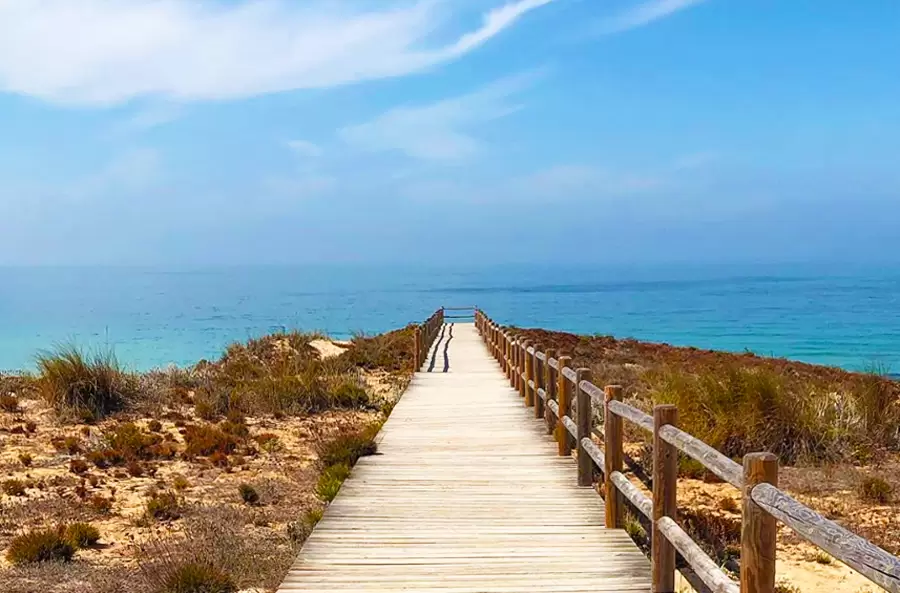
Praia do Malhão, located between Vila Nova de Milfontes and Porto Covo, presents itself as one of Alentejo’s hidden marvels.
The vast sandy stretch, interspersed with rocks and bordered by majestic cliffs, is a testament to the raw power of the Atlantic. The beach, with its inviting waves, beckons surfers to engage with nature’s relentless force.
Yet, the sea, in its majestic indifference, offers its treasures sparingly.
Surfers here find not just a challenge but a profound connection with the primordial, a dance with nature’s elemental forces as timeless as the cliffs themselves.
Praia da Amália
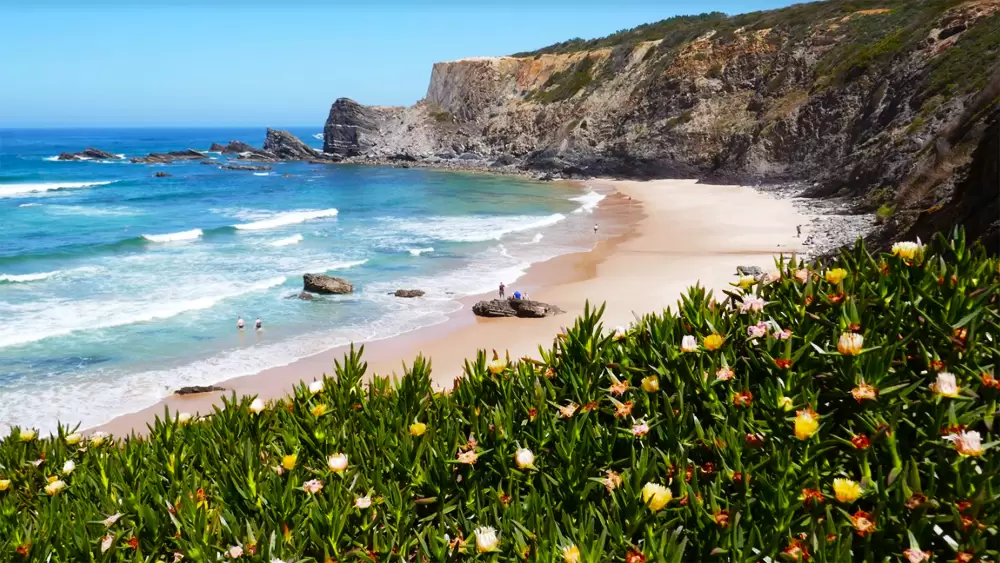
Praia da Amália, forever immortalized by the legendary singer Amália Rodrigues, who once had a home perched on its cliffs, offered us a scenic journey.
Nearby Brejão, with its supermarket, ATMs, and restaurants, adds a touch of modern convenience to the experience, a striking contrast to the rugged beauty of the beach.
Praia do Carvalhal

Just 3 km north of the enchanting Praia da Amália, we found Praia do Carvalhal.
This beach, where a stream gracefully winds its way to the sea, has a way of captivating both the young and the young at heart.
It’s a sanctuary of relaxation, the kind that prompts introspection and the recurring question: “Why don’t I visit here more often?”
With its convenient access, ample parking, fine sandy shores, and a lively sea — vigilantly guarded in the summer — Carvalhal offers a tranquil escape from the everyday.
Visit Zambujeira do Mar

In Zambujeira do Mar, merely 10 km from Praia do Carvalhal, we stumbled upon a village that seemed to be perched on a balcony overlooking the vast expanse of the sea.
Here, in early August, the tranquil Herdade da Casa Branca bursts into life with the rhythm of the Sudoeste Festival, transforming from a serene sanctuary into a hub of vibrant festivity.
The village beach, with its inherent charm and summer lifeguards, offers not just sand and sea but an invitation to peace, a soothing counterpart to the wilder beaches stretching along its coastline.
Praia de Almograve
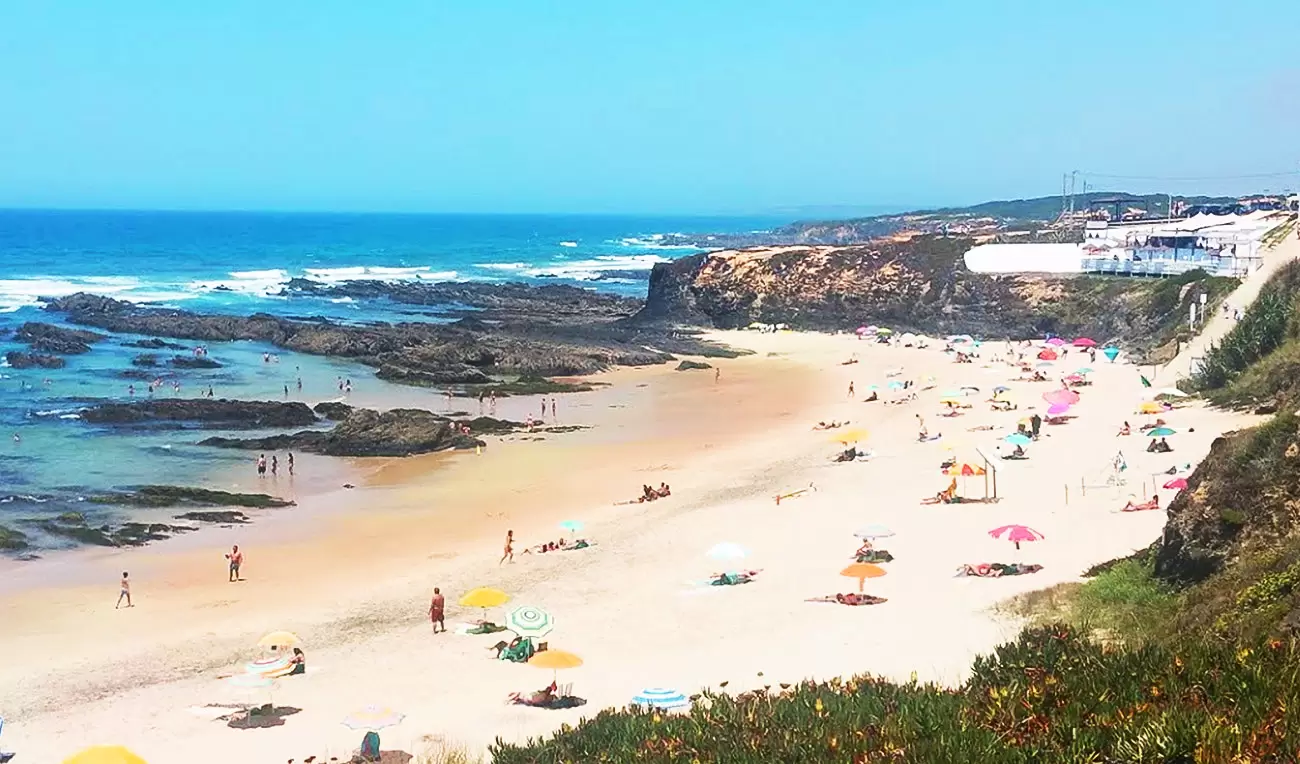
At Praia de Almograve, nestled within the Southwest Alentejo and Vicentina Coast Natural Park, expansive sands meet striking red cliffs and dunes.
This beach, equipped with facilities and parking, lies near the tranquil village of Almograve.
To the south, the rugged beauty of Cabo Sardão presents breathtaking views of the jagged coast and deserted beaches, a landscape rich with stories etched by time and tides.
Praia da Franquia | Visit Vila Nova de Milfontes
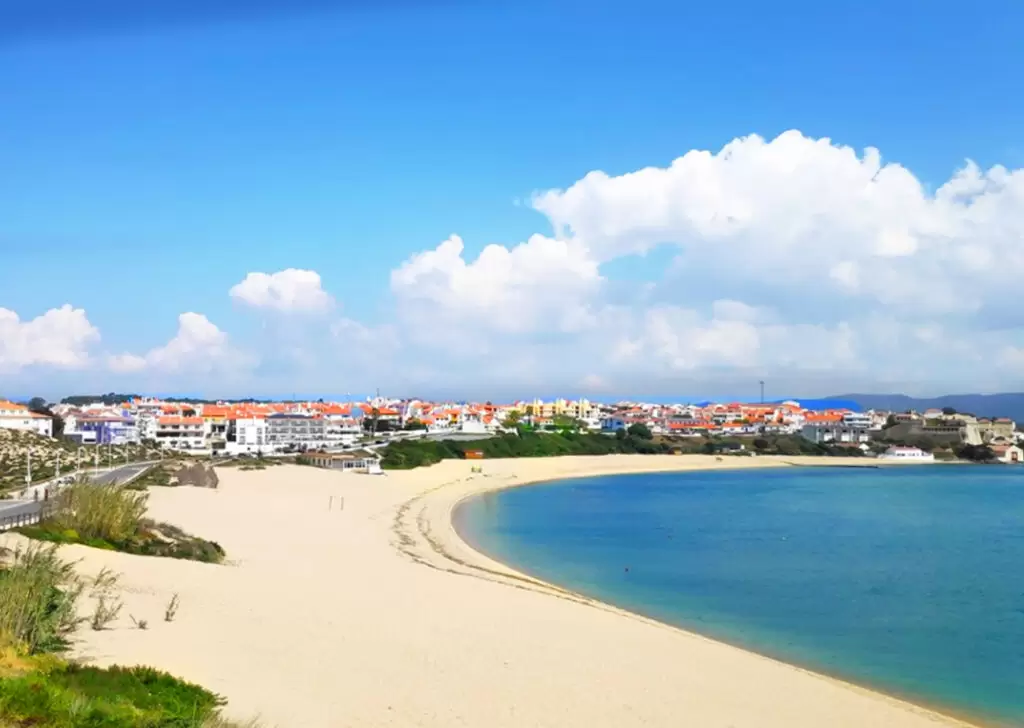
In Vila Nova de Milfontes, 10 km from Praia de Almograve, we explored a town nestled by the Mira River, a site once coveted by pirates but now a haven for tourists.
Along Avenida Marginal, we discovered Praia da Franquia.
Its fine sands and the gentle waters of the Mira, under watchful eyes and well-equipped for visitors, offer a serene riverside retreat, a perfect blend of historical charm and tranquility by the water’s edge.
Praia das Furnas
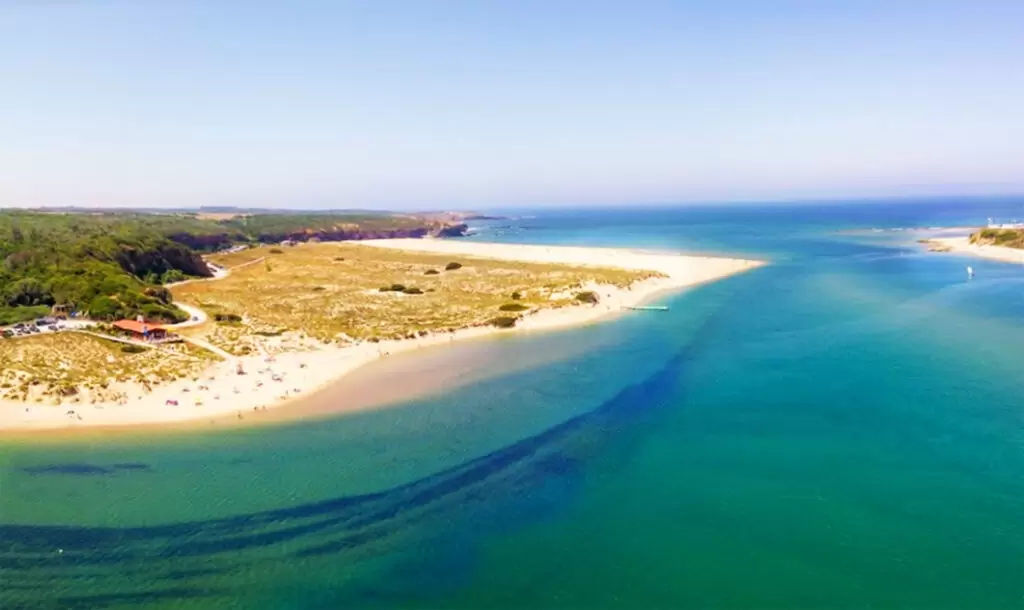
Just across the river’s mouth lies Praia das Furnas, a beach of dual character waiting with patient tranquillity.
In the summer, a ferry provides passage from the village to this unique beach, where one faces the delightful dilemma of choosing between the river’s serene embrace and the ocean’s lively vigor — akin to deciding whether to watch a contemplative documentary or an adrenaline-pumping action film.
And with its convenient access, parking, and a restaurant serving fresh fish, it’s a quintessential day at the beach, complete with culinary delights.
Visit Alto Alentejo
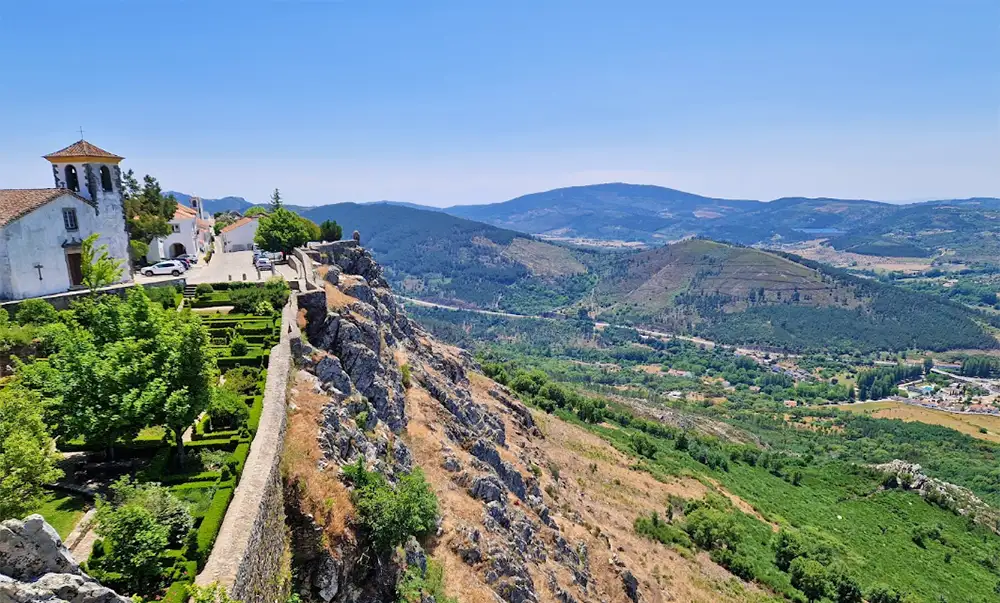
In Alto (Upper) Alentejo, the allure is as abundant as stars in the night sky — a spectacle that we have often marveled at.
The Serra de São Mamede Natural Park, nestled in the heart of interior Alentejo, invites the curious with its trails that seem to unveil the earth’s hidden narratives.
The region’s villages, brimming with untold stories, whisper to visitors through every stone and corner.
The gastronomy here is a seduction of both palate and heart, perfectly complementing the vast views that stretch beyond horizons.
Each meal was not just a feast for the taste buds but a conquest, with every dish serving as a testament to the region’s culinary expertise, deeply intertwined with the land and its history.
Alter do Chão
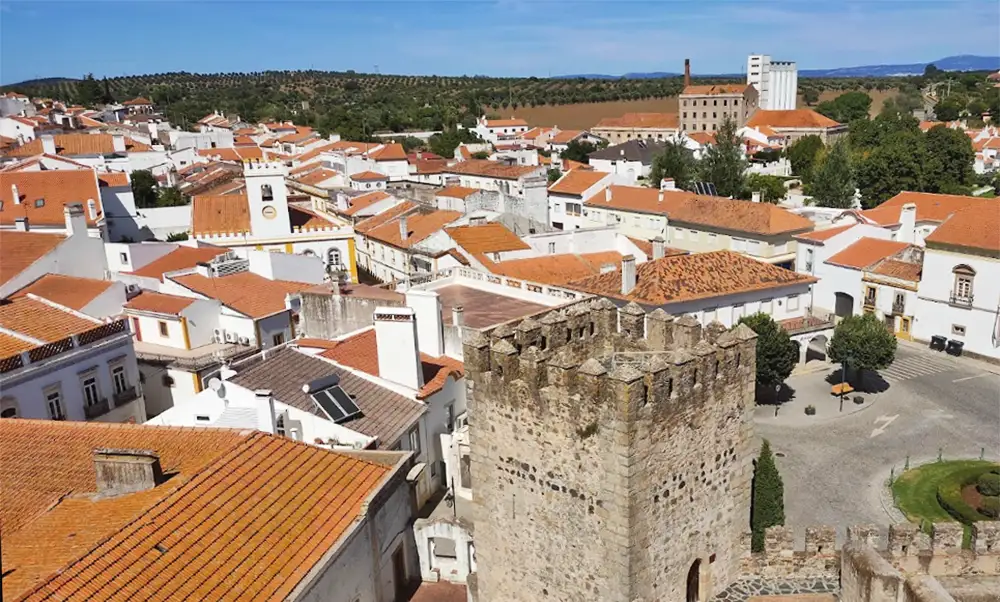
Alter do Chão, a village where tranquility and history are interwoven, traces its origins back to Roman times when it was known as Abelterium.
Walking through its streets, we felt a profound connection to the past, as if each cobblestone whispered a story from bygone days.
Alter do Chão Castle
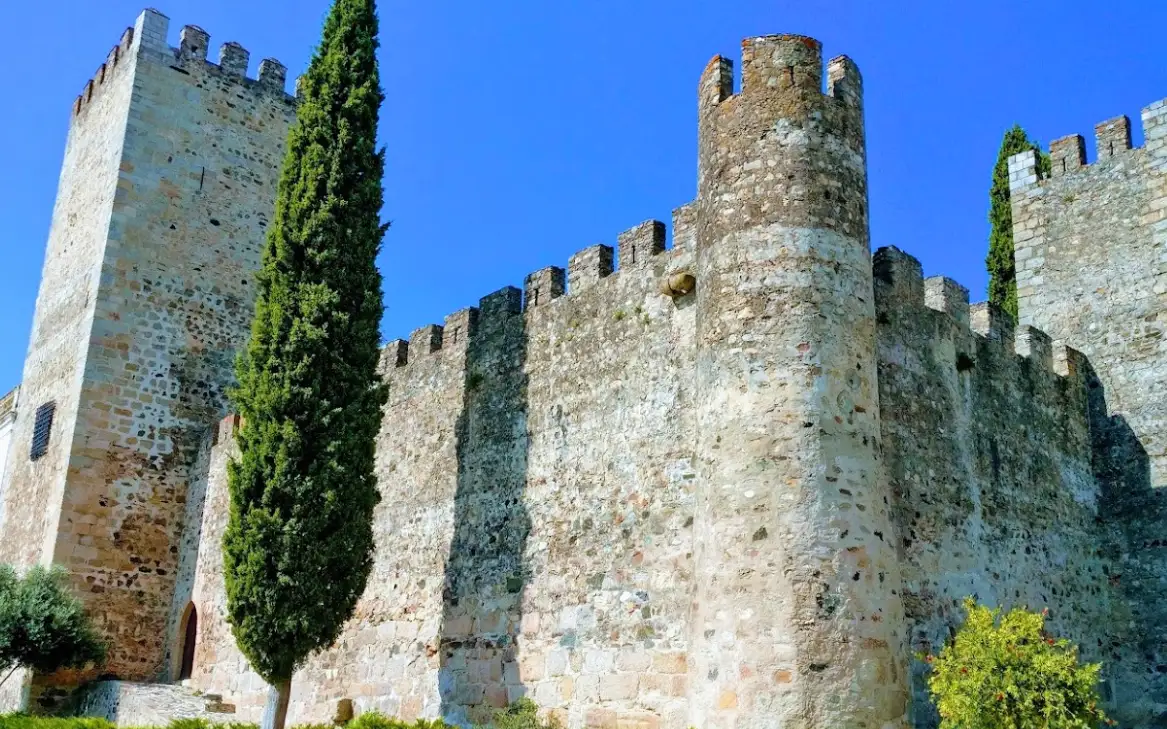
The village of Alter do Chão, which has grown around its castle since the 14th century, retains a timeless charm.
The castle, commissioned by King Pedro I in 1359, stands as a significant presence, anchoring the main square, Praça da República.
Its historical weight and architectural beauty continue to define the village’s character.
Coudelaria de Alter

The Royal Equestrian School of Alter, established in 1748 by King João V, has indelibly marked the village of Alter do Chão.
It was here that the revival of the Alter Real Lusitano horse breed began, a breed whose esteem in equestrian circles could be likened to the reverence Cristiano Ronaldo commands in football.
To us, these horses are more than just animals; they symbolize a living tradition of equestrian excellence, a proud and graceful embodiment of Alter do Chão’s rich heritage.
Serra de São Mamede in the Interior Alentejo
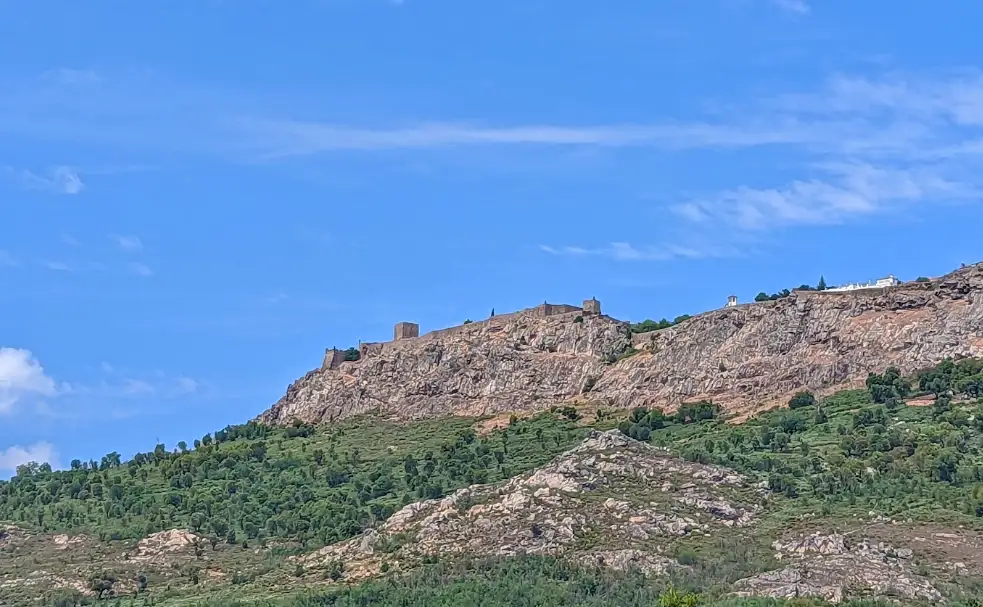
In the Serra de São Mamede, stretching across Arronches, Castelo de Vide, Marvão, and Portalegre, one uncovers an Alentejo that deviates from the expected.
This region, arguably one of the most picturesque in Alentejo, defies the typical imagery of flat and arid landscapes. Its elevated, verdant terrain presents a delightful contrast.
From its highest peak, located south of the Tagus, the vista is nothing short of exceptional.
To the north, oak and chestnut trees dominate the landscape, while cork and holm oaks are prevalent in the south.
This natural tapestry, rich with rare birds and wild animals, and interspersed with medieval villages, weaves a mosaic that uniquely embodies the spirit of Alentejo.
Judiaria of Castelo de Vide – Visit Castelo de Vide
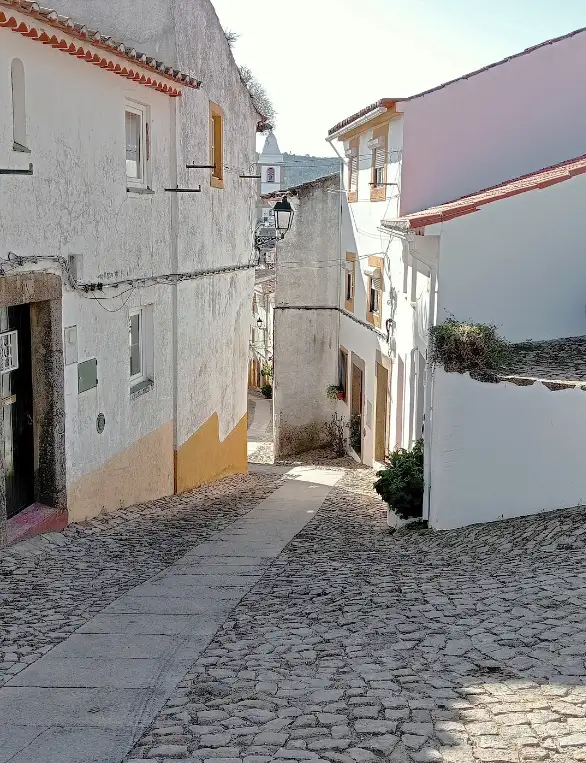
In the medieval streets of Castelo de Vide, the echoes of its Jewish heritage resonate in every name and corner.
The ancient synagogue, once a vibrant hub for the Jewish community and its school, has undergone transformations across centuries, mirroring the ebbs and flows of its times.
Our exploration of this historic site was marked by curiosity and respect.
Within its walls, we found traces of a rich and complex history, silent yet eloquent witnesses to an epoch that, while vanished, continues to breathe life into the stones of Castelo de Vide.
Castelo de Vide Castle
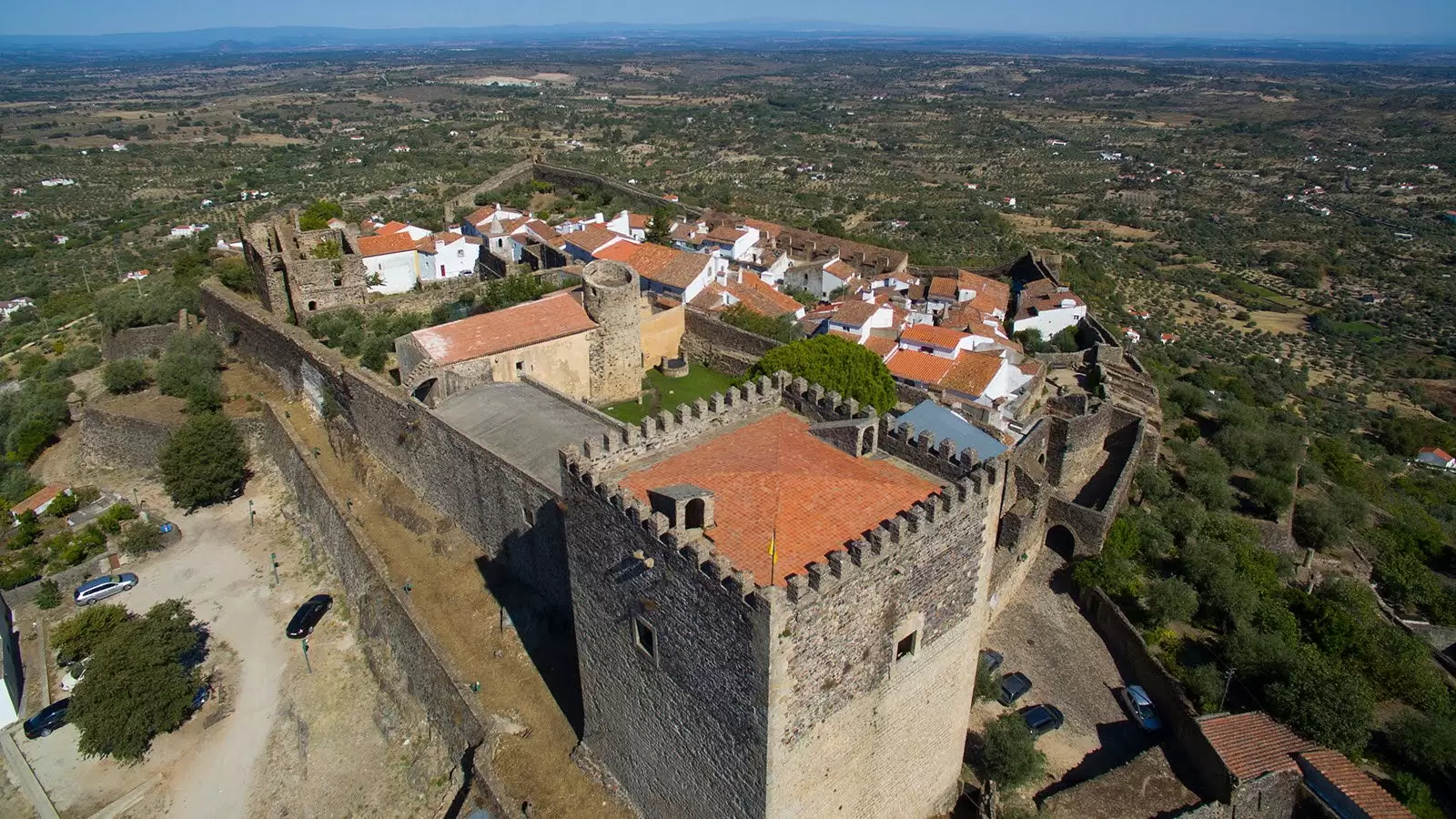
Rising amidst a sea of white houses, the Castelo de Vide Castle adds a surprising element to the typical Alentejo landscape.
From its towering vantage point, one is afforded a panoramic view of the region’s vastness.
The eye roams over scattered small villages, Marvão’s imposing silhouette in the distance, and even the lands of Spain peeking over the horizon.
On the castle’s northern slope, between it and the Fonte da Vila, the historic Judiaria quarter reveals itself through a labyrinth of narrow streets, each echoing centuries of history.
Marvão Castle – Visit Marvão
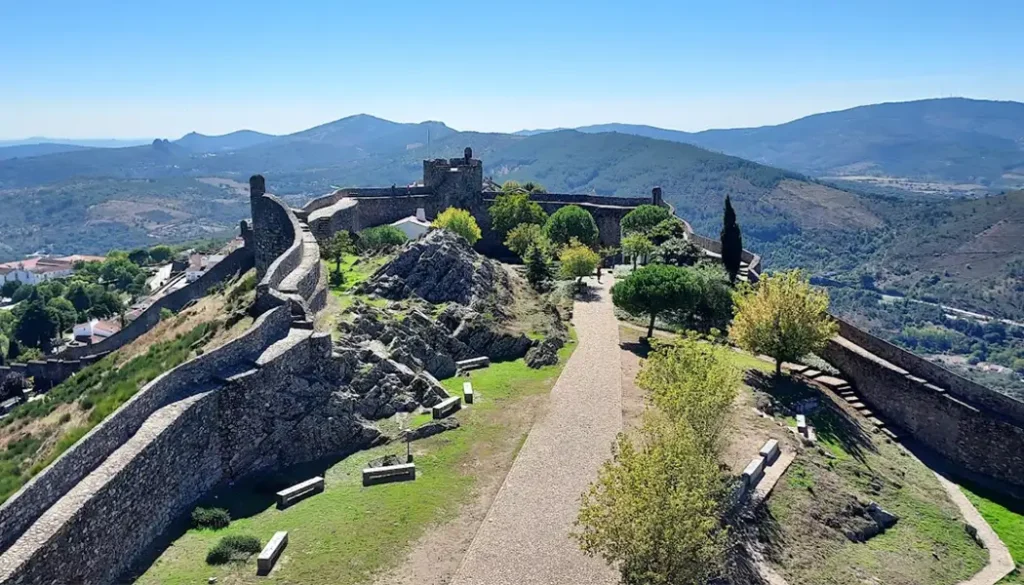
Between Castelo de Vide and Portalegre, perched atop the Serra de São Mamede, lies the tranquil village of Marvão.
Named in honour of the Moorish warrior Ibn Marúan, its history dates back to the 9th century Arab rule and extends to the Christian Reconquista led by D. Afonso Henriques.
Within its fortified walls, one discovers traditional Alentejo architecture, a silent testament to its storied past.
The village’s vantage point offers breathtaking views, and its Chestnut Festival in November is an invitation to immerse oneself in the local traditions and flavours.
Roman City of Ammaia

Then there’s the Roman City of Ammaia, a significant archaeological site in northern Alentejo.
Founded in the 1st century AD and later achieving municipium status, it stands as a poignant reminder of Roman Lusitania’s past.
Declared a National Monument in 1949, Ammaia witnessed the ebb and flow of empires, ultimately succumbing to abandonment with the Visigothic advent in the 5th century.
Today, its ruins speak in hushed tones of a grandeur long passed, yet indelibly imprinted in the landscape.
Visit Elvas
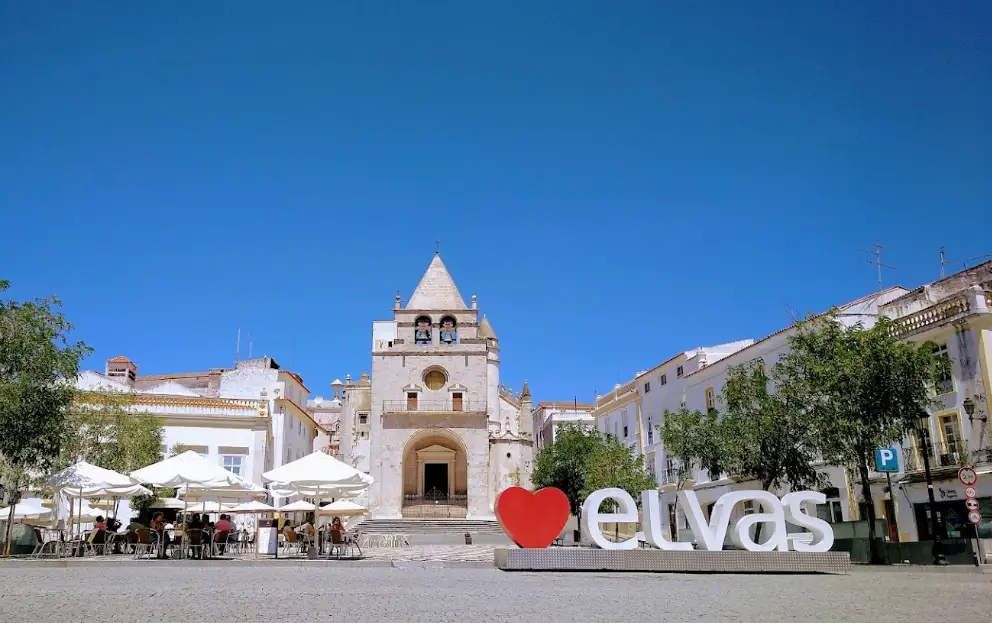
Elvas, a city near the border, is a must-visit for anyone exploring Alentejo.
Known as Portugal’s vigilant bodyguard, Elvas has historically stood as a bastion of independence, ever ready to defend the nation.
Its castle, originally an Islamic fortification, underwent significant reconstruction in the 13th and 14th centuries.
The Keep, dating from 1488, still stands, though the castle’s present form harks back to the 16th century.
It has been a silent witness to pivotal moments in history, including peace treaties and princess exchanges, symbolizing unyielding resistance.
Forte de Nossa Senhora da Graça
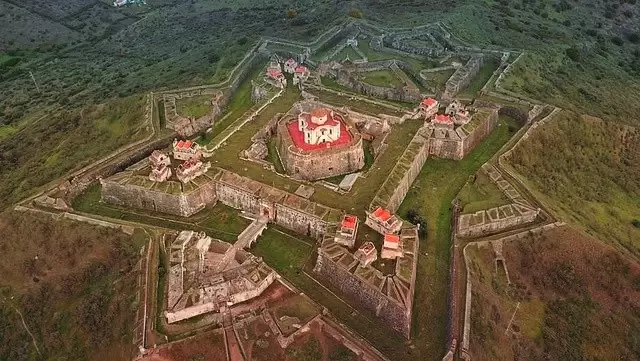
The Forte de Nossa Senhora da Graça, with its central redoubt never breached by invaders, has always left an indelible impression on us.
Protected by an array of traps, hidden cannons, and falling grates, its defensive ingenuity is awe-inspiring.
To the north, the “wolf pits” — camouflaged holes filled with straw and thatch, concealing spikes — stand as a testament to the cunning defence strategies employed.
Amoreira Aqueduct
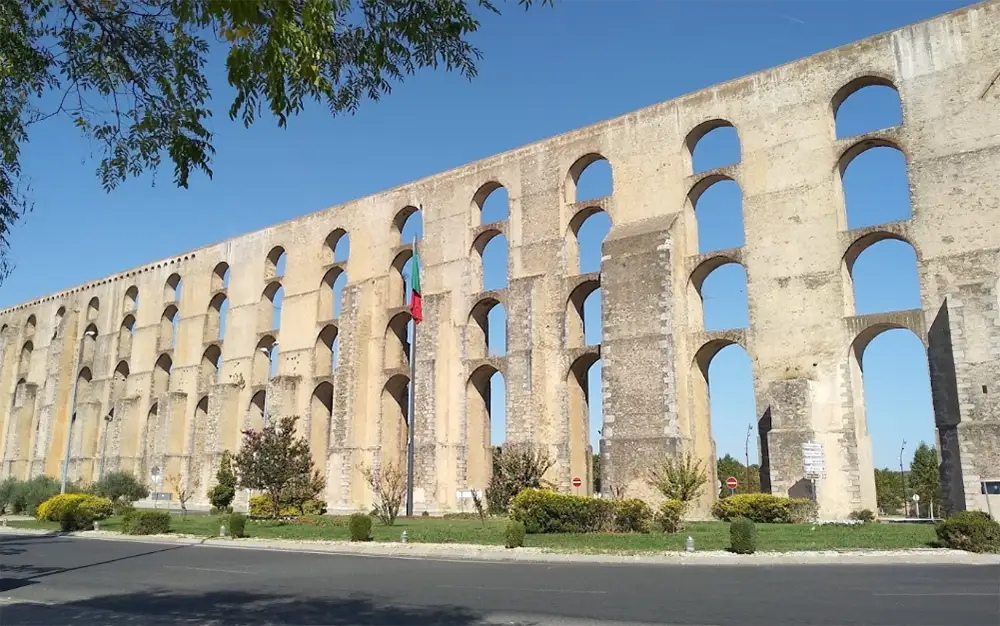
The 16th-century Aqueduct of Amoreira, an engineering marvel by Francisco de Arruda (also known for the Tower of Belém in Lisbon), spans approximately 8 km, including an underground section.
Its massive masonry pillars, cylindrical buttresses, and layered arches, which carry water to the fountain in Largo da Misericórdia, showcase the architectural genius of its time.
Fort of Santa Luzia

The Fort of Santa Luzia, erected in 1641 during the Restoration Wars, commands a hill near Elvas’ walls.
As the first completed structure in the city’s defensive system, it played a crucial role in protecting against enemy incursions.
Now repurposed as a Military Museum, it reveals the military history of Elvas and houses artifacts and testimonies of past conflicts, each piece narrating a story of resilience and struggle.
Baixo Alentejo – Visit Beja
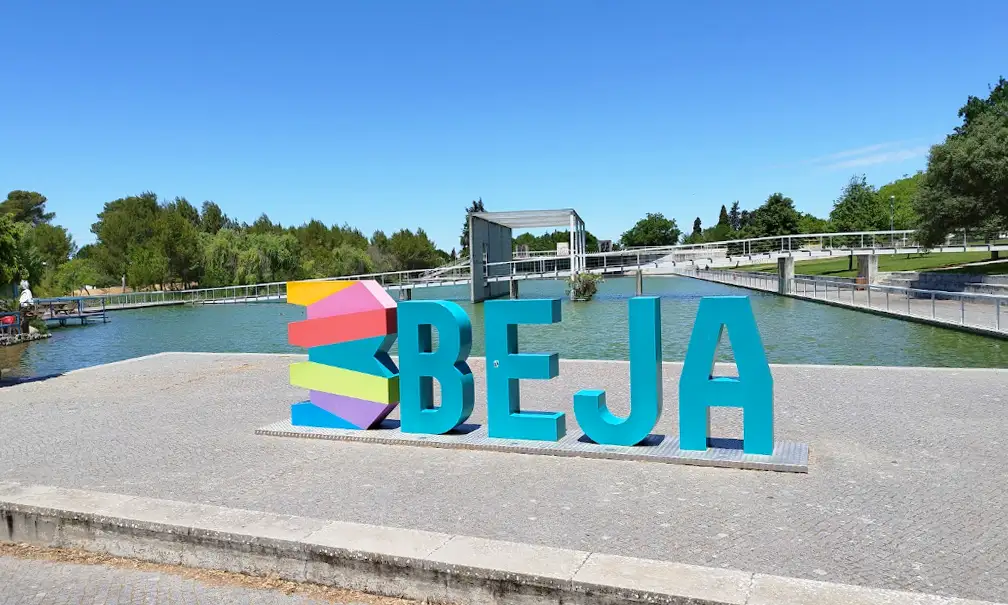
Beja, the capital of the Baixo Alentejo district, is a city whose depth and richness are often underestimated.
Spanning over 2500 years, its tapestry of history weaves together remnants of ancient settlers with the legacies of Roman, Moorish, and medieval periods.
The city is crowned by the tower of its castle, the tallest in Alentejo, standing as a vigilant sentinel amidst neighbourhoods rich in Jewish and Moorish heritage.
The local municipal museum, a treasure trove of diverse historical echoes, holds a special place in our hearts, encapsulating the myriad layers of Beja’s storied past.
Castle of Beja in Southern Portugal

The Castle of Beja, rising on the foundations of a Roman fortification, was reconstructed in 1310 by King Dinis.
As an integral part of Portugal’s national defensive strategy, the castle is distinguished by its Keep, an emblem of the city.
Encircled by battlements and a balcony known as an adarve, the castle tells tales of strategic significance and historical resilience, its stones steeped in the chronicles of time.
Regional Museum of Beja (Queen Dona Leonor Museum)
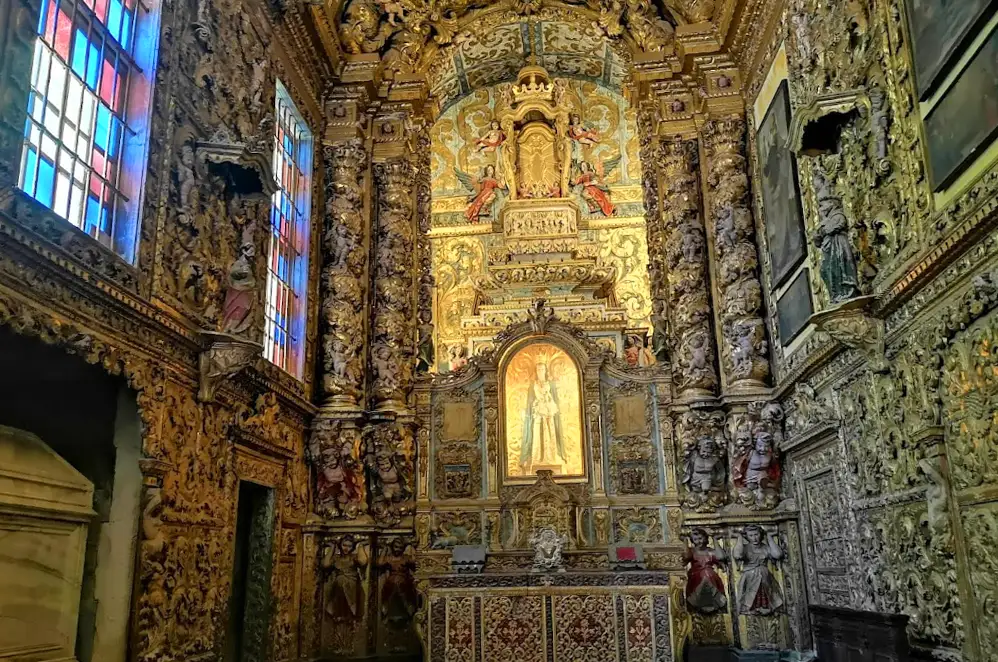
Nestled within the Convent of the Conception is the Queen Dona Leonor Regional Museum, a sanctuary housing the memories and historical fragments of the land.
It’s akin to an eclectic family gathering, where medieval artifacts, Roman relics, and enigmatic pieces from an unclear lineage come together.
The Visigothic section in the Church of Santo Amaro beckons visitors into an exploration of archaeology, epigraphy, and heraldry, offering a journey through history that unfolds in silence, engaging those who wander its corridors and rooms in a mute dialogue.
Vale do Guadiana Natural Park and Pulo do Lobo Waterfall

In the Vale do Guadiana, the Natural Park unfolds into a canvas of magnificent natural landscapes. Here, ancient tide mills and cliffs draped in Mediterranean scrub offer a visual and soulful reprieve.
The park encompasses villages rich in heritage and vast plains, stretching from Corte Gafo to Serra de Serpa, home to unique vegetation and preserved ecosystems.
Among these, even the rare four-leaf clover finds its place, a symbol of luck nestled in rustic splendour.
At the northern edge of the Guadiana Natural Park, where the landscape ascends to a level of unparalleled magnificence, sits the Pulo do Lobo.
This natural wonder stands as a testament to nature’s awe-inspiring creativity, a dramatic and breathtaking sight that encapsulates the untamed beauty of the region.
Visit Mértola

Mértola, a town perched gracefully alongside the Guadiana River, stands as a sentinel of time.
Its history, woven from threads that reach back to the Neolithic era and stretch through the Moorish period, is palpable in every cobblestone street and hidden alleyway.
Each turn in this town is like turning the page of an ancient book, revealing narratives rich in heritage and mystery.
The church, a mosque in its former life, alongside the castle and the Alcazaba, are the stalwart guardians of Mértola’s multifaceted history.
The local museum serves as a gateway to exploring this rich past, while the annual Islamic Festival in May offers a deep dive into the town’s cultural and historical tapestry, inviting visitors to immerse themselves in a celebration of Mértola’s unique legacy.
Castle of Mértola

The Castle of Mértola, dating back to the 14th century, once served as the headquarters of the Order of Santiago. Surrounded by extensive walls, the castle is a treasure trove of history.
Upon entering, one is immediately struck by the reuse of an Islamic door and the presence of a rectangular cistern in the former parade ground.
These remnants are evocative, sparking the imagination and capturing the essence of a time when different cultures and histories intertwined seamlessly.
To the north, the imposing Keep towers over the landscape, a silent testament to Mértola’s storied and diverse past.
Map for Visiting Alentejo
- To see the list of places, click in the top-left corner of the map.
- You can enlarge the map by clicking in the top-right corner.
- To save it in Google Maps, click on the star icon.
How Many Days Are Needed to Visit Alentejo?
To truly immerse yourself in the diverse beauty of Alentejo, a minimum of four days is essential.
This period allows for an initial exploration that teases the senses and leaves one longing for a deeper dive.
In the historically rich city of Évora, one can delve into the past and meander through rustic rural villages. Alternatively, tracing the coastline uncovers medieval fortified villages, each a snapshot of history preserved in time.
With a week at your disposal, the true essence of Alentejo begins to reveal itself.
From the verdant mountains of São Mamede to the serene beaches along the Alentejo coast, a seven-day itinerary allows for a comprehensive experience of this captivating region.
Itinerary for the Best of Alentejo
- Day 1: Évora – Start in the UNESCO World Heritage city of Évora. Explore the ancient town within its walls, starting from Praça do Giraldo and wandering through Rua 5 de Outubro to the cathedral and the Roman Temple.
- Day 2: Estremoz, Borba, and Vila Viçosa – Discover Estremoz, known for its marble, then enjoy wine tasting in Borba. In Vila Viçosa, explore the royal history at the Ducal Palace.
- Day 3: Monsaraz, Moura, and Mértola – Head south to visit Monsaraz, overlooking the Alqueva Lake. In Moura, explore the Moorish castle, and in Mértola, delve into the town’s rich history.
- Day 4: Zambujeira do Mar, Vila Nova de Milfontes, and Porto Covo – Conclude the trip by exploring these charming fishing villages within the Southwest Alentejo and Vicentina Coast Natural Park, enjoying the wild beaches and a relaxing atmosphere.
When to Visit Alentejo?
The ideal times to visit Alentejo are during the spring (March to May) or autumn, when the weather is pleasantly moderate, perfect for outdoor activities and beach days.
These seasons also typically offer fewer crowds and more affordable accommodations and dining options.
Summer in Alentejo can be intensely hot, transforming the region into a kind of giant sauna. Morning activities and beach days are recommended as respite from the heat.
Winter, though less popular, offers its charm. Central and Lower Alentejo bask in radiant sunshine despite the chill, while the coast attracts surfers eager to challenge the winter waves. This season allows for a quieter, more introspective experience of Alentejo’s varied landscapes.
Popular Activities and Things to Do in Alentejo

In Alentejo, regardless of when you visit, the region always has something special to offer.
The area is a haven for those who cherish rich gastronomy, authentic culture, and immersive experiences.
Wine and olive oil tastings offer a glimpse into the region’s culinary soul, while Alentejo Bread workshops provide a hands-on approach to understanding local food traditions.
For nature enthusiasts, the natural reserves of Alentejo are akin to a theme park sans the queues.
Each hiking trail offers a new adventure, and the landscapes are so stunning that they could easily become your next phone wallpaper.
The beaches along the Costa Vicentina cater to surfers seeking the thrill of the waves.
For those searching for coastal tranquility, Comporta and Melides are ideal, while cultural treasures await in Évora, Arraiolos, and Monsaraz.
To experience Alentejo from an entirely new perspective, consider a hot air balloon ride over Monsaraz or paragliding in the São Mamede mountains.
Viewing the landscape from above offers a magical, almost surreal perspective of this beautiful region.
Popular Activities:
- Hot Air Balloon Ride with Champagne Toast from Monsaraz
- Private Walking Tour of Key Sites in Évora
- Megalithic and Cork Tree Tour from Évora
- Horseback Riding on the Beach
- Walking Tour in Estremoz
What to Eat in Alentejo?

When it comes to Alentejo’s cuisine, it’s more than just food; it’s an epicurean love story.
The region’s black Iberian pigs, which graze under cork trees and feast on acorns, provide the foundation for a ham that’s as revered as the finest art.
Alentejo bread, a staple in the local diet, is central to traditional dishes like Açorda Alentejana, often enhanced with poached eggs, garlic, cilantro, and sometimes salted cod.
Another culinary innovation is migas, a hearty dish using this same bread.
The region’s DOP cheeses, particularly from Évora and Serpa, are national treasures, offering a gastronomic commitment that’s difficult to turn away from once experienced.
Lamb stew, a regional delicacy, along with the tannin-rich wines of Alentejo, completes this unique and unforgettable gastronomic experience.
10 Best Restaurants in Alentejo
Evora
- Fialho – My culinary adventure began at Fialho, where the Pata Negra ham, an embodiment of culinary perfection, took center stage. This ham, when paired with the robust Alentejo bread, transformed into more than just an appetizer; it became a reaffirmation of life’s exquisite beauty. The octopus salad here, a marvel in its tenderness, whispered secrets of the sea in every bite.
- O Templo – We experienced the royal treatment of pork cheeks, elevated to an art form. Wrapped in a vinha d’alhos sauce that was nothing short of a triumph, each portion, even a mere half, promised a feast fit for kings. The chocolate mousse served as a sweet epilogue, a happy ending to a culinary narrative.
- Dom Joaquim – In the presence of the Michelin-recognized Dom Joaquim, one must reserve a spot to indulge in its exquisite offerings. Here, the pickled partridge was so divine, it rendered the mundane act of using a fork and knife a forgotten chore.
Milfontes
- Tasca do Celso – A sanctuary of warmth and tradition, Tasca do Celso presented Alentejan pork so tender, it dissolved upon meeting the tongue. The salt cod neck, a revelation in taste, and the acorn digestif, accompanied by nuts and almonds, concluded the meal with a flourish.
- Pátio Alentejano – At Pátio Alentejano, the polvo a lagareiro (octopus) was nothing short of spectacular. Juicy meats and delectable migas affirmed the restaurant’s status as a temple of Alentejan cuisine.
Elvas
- Restaurante El Cristo Elvas – In Elvas, I found Restaurante El Cristo, where the seafood, especially the crab, defied expectations in size and flavor, arguably the best in all of Alentejo.
- Adega Regional – Adega Regional, with its quintessential Alentejan dishes, provided a cozy retreat. The Alentejan meat with clams and the sericaia (egg sweet) with plum resonated as pure, edible poetry.
Beja
- Restaurante Adega Típica 25 de Abril – Here, one embarks on a culinary odyssey through regional classics. Renowned for its famous migas, Cação soup, and Açorda de bacalhau, this restaurant captivates the palate with every dish.
Borba
- O Espalha Brasas – A hymn to traditional cooking, O Espalha Brasas served rabbit that arguably reigns supreme in the region, accompanied by potatoes that define culinary delight. The portions here are so generous that a half serving suffices for two.
Marvão
- Mil Homens – The deer with mushrooms was a rare gastronomic treat, and the sericaia for dessert caressed the palate, epitomizing the essence of fine dining and warm hospitality.
Where to stay in Alentejo?
Deciding where to stay in Alentejo is akin to choosing between fine wines; each option promises its own unique and memorable experience. Among these, two locations stand out as ideal bases to explore the diverse charms of the region:
- Évora – nestled at the heart of Alentejo, and boasting the status of a World Heritage city, Évora is perfect for day trips to the surrounding towns. Its rich history and central location make it an ideal spot for those looking to delve deep into the region’s cultural heritage. >> Book your accommodation in Évora now
- Sines – on the coast, with its vast port, Sines offers easy access to the stunning coastline and natural parks, making it a haven for nature lovers and those seeking a serene beachside retreat. >> Book your accommodation in Sines.
Best Accommodation in Évora – Alentejo

Convento do Espinheiro, Historic Hotel & Spa, Évora
- A five-star hotel, majestically set in a meticulously renovated 15th-century convent, surrounded by stunning gardens spanning 80,000m².
- Rooms with en-suite bathrooms, slippers, and complimentary products, offering an oasis of comfort.
- Amenities include a sumptuous spa, tennis court, fitness centre, and both indoor and outdoor pools. >> Book at Convento do Espinheiro, Historic Hotel & Spa, Évora.
ADC – Albergaria Do Calvário – by Unlock Hotels
- Located in the heart of historic Évora, this four-star hotel is housed in a former 16th-century olive oil mill. Bright rooms and suites, each decorated with local artists’ works.
- Marble bathrooms so beautiful, you might feel guilty for using them.
- The hotel bar and terrace offer relaxing moments, complemented by a delicious breakfast buffet. >> Book at ADC – Albergaria Do Calvário – by Unlock Hotels.
Évora Olive Hotel
- In the vibrant heart of Évora’s centre, this four-star establishment is a modern retreat.
- With 69 rooms, each featuring a flat-screen TV and private bathroom, the hotel celebrates contemporary design.
- Amenities include indoor and outdoor pools and a blessing for families – a children’s club. >> Book at Évora Olive Hotel.
Flat in Évora? Almoura Giraldo
- A serene haven in the historic centre with the advantage of a prime location, offering free Wi-Fi and an inviting terrace.
- The flat features three bedrooms, a living room, and a fully equipped kitchen, close to Évora Cathedral, Roman Temple, and the mystical Chapel of Bones. >> Book at Almoura Giraldo.
Hostel? Heaven Inn Suites & Terrace
- More than a typical hostel, it transcends its category, offering a double room with private bathroom akin to a boutique hotel retreat.
- Its location, just a whisper away from the Chapel of Bones, makes it a strategic point for exploring the soul of Évora. >> Book at Heaven Inn Suites & Terrace.
How to Get Around
To fully explore Alentejo, renting a car is the best option, as the region is vast and brimming with places to discover. >> Use DiscoverCars to save up to 70%.
Reaching Évora – Situated about 90 minutes by car, Évora is easily accessible and serves as a perfect base for your Alentejo adventures.
If renting a car isn’t feasible, don’t worry; there are alternative transportation methods.
Trains and Buses – Alentejo is well-connected by train and bus networks. Trains offer a scenic route to Évora and Beja, though they might be less frequent and slightly pricier than buses.
A train ticket from Évora to Lisbon, for instance, ranges between €13 to €18.
Buses connect various towns and cities within Alentejo and to other regions. A typical local bus trip might cost around €20, while longer journeys can be cheaper, sometimes as low as €15.
For instance, travelling from Évora to Lisbon by bus can cost between €5 to €10, making it an economical choice for inter-city travel.
Frequently Asked Questions:
Where is Alentejo Located?
- Geographically, Alentejo is a serene and sprawling region in the south of Portugal. It is bordered by the Central region to the north and the Algarve to the south, with Spain lying to its east. Alentejo is a picturesque canvas, its rural landscapes dotted with vast fields where vines and olive trees are abundant.
- Key cities in Alentejo include Évora, a city echoing with ancient tales and recognized as a UNESCO World Heritage Site; Beja, radiating a quiet pride; Sines, looking out to the sea with a poetic gaze; and Elvas, standing as a historic guardian by the Spanish border. Each of these cities offers a unique insight into the rich tapestry of Alentejo’s culture and history.
What is the Most Famous Dish in Alentejo?
- “Carne de Porco à Alentejana” is a celebrated staple of Alentejo’s cuisine. This stew combines pork and clams, accompanied by potatoes and cilantro, creating a symphony of flavours that epitomizes the region’s culinary heritage.
What does “Alentejo” Mean?
- “Alentejo” translates to “Beyond the Tagus (Tejo) River.” The name reflects its geographical location in Portugal, stretching south from the Tagus River to the Algarve region.
Why Should I Visit Alentejo in Portugal?
- Alentejo is a treasure trove of cultural heritage, boasting Roman ruins, medieval towns, marble quarries, walled cities, and other intriguing sites.
- It’s like a film with everything: action (history), romance (landscapes), and even a bit of suspense (what delicious dish is next?).
How Many Days in Évora?
- For travellers relying on bus or train services, a two-day stay in Évora is recommended to cover the city’s highlights. However, if you have the convenience of a rented car, extending your visit to four days or more is ideal. This allows for a deeper exploration of Évora’s charm and the surrounding areas of Alentejo >> Use DiscoverCars to save up to 70%.
What Is the Weather Like in Alentejo?
- Alentejo’s climate is predominantly Mediterranean – warm and dry, with a continental influence, adding to the region’s allure. The climate varies across its eight sub-regions, each offering its own unique weather patterns and, thus, distinct experiences.
Is It Expensive to Visit Alentejo?
Travelling in Alentejo can be more budget-friendly compared to other regions in Portugal. The cost varies depending on location:
- Inland Towns: These are generally more affordable, offering a budget-friendly experience.
- Coastal Areas: Places like Comporta and Troia are known to be pricier.
- Accommodation: Hotel prices in Alentejo range significantly with the seasons. In winter, a standard room in a four-star hotel may cost around €65, while the same room could go up to €240 in summer.
- Dining: Simple restaurant meals typically range from €20 to €30, with daily specials around €15. Alentejo’s wine, renowned for its quality, is reasonably priced, with good bottles available for under €6.
- Cultural Activities: Museum entry fees are about €5, and guided tours are generally more affordable than in popular tourist areas like Lisbon or the Algarve.



